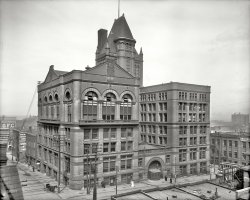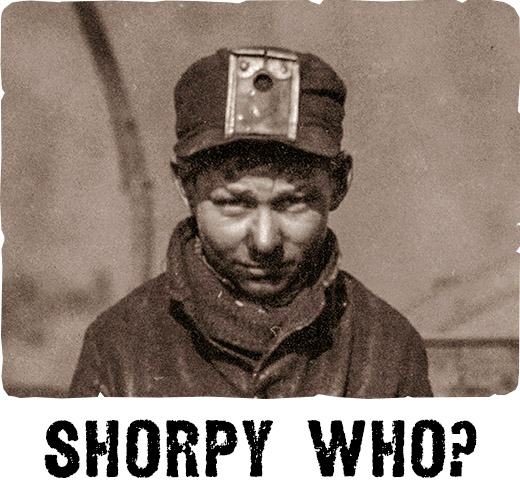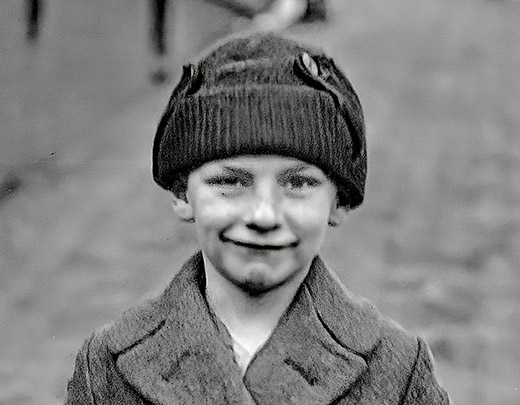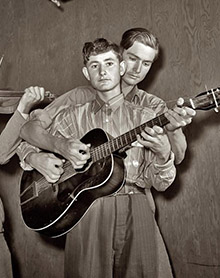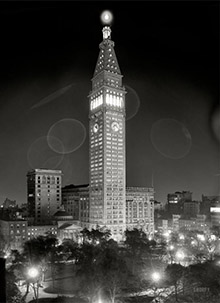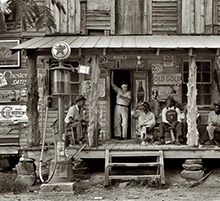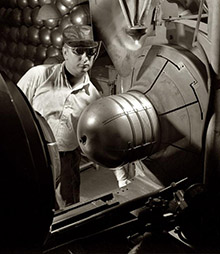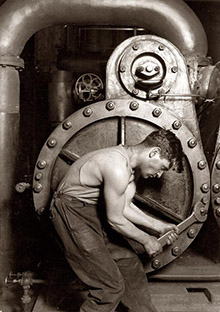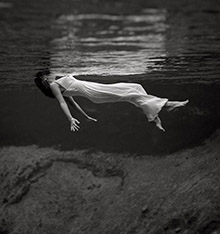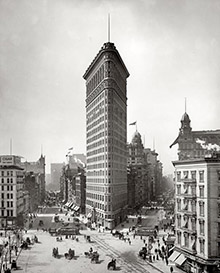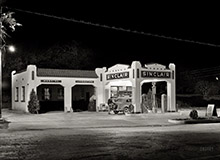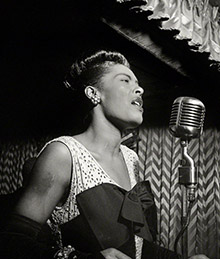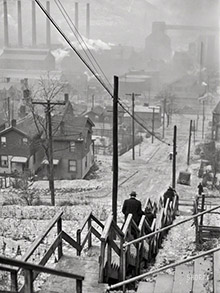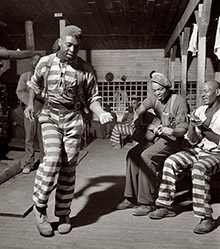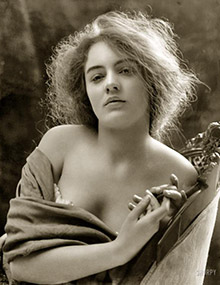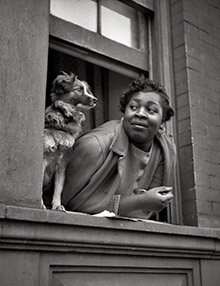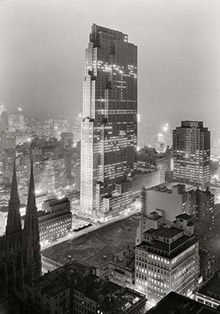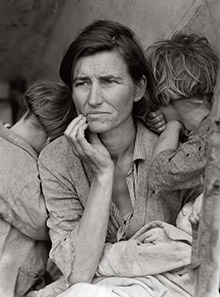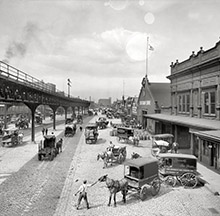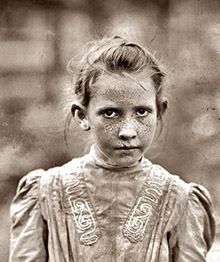
MAY CONTAIN NUTS

Search Shorpy
SHORPY ART
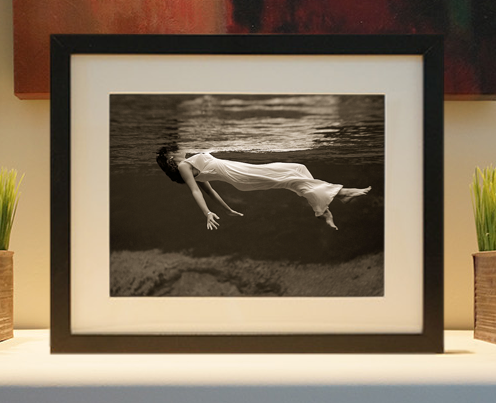
Framed or unframed, desk size to sofa size, printed by us in Arizona and Alabama since 2007. Explore now.
Join and Share
Ad-Free Shorpy
Shorpy is funded by you. Patreon contributors get an ad-free experience.
Learn more.

Recent comments
- Roll your own
- Rugged and real!
- A Charles Purcell - Mama Cass Connection
- Uncle SAAM
- Obfuscation
- One Chocolate Soldier rode away
- Victor Marquis de la Roche
- The Little House Across Way ...
- Vanderbilt Gates
- Vanderbilt Mansion
- You can still see that gate
- Withering heights for me
- So Jim,
- Top Heavy
- Re: Can't Place It.
- Bus ID
- Since you mention it
- The White Pages ?
- Moonlight Tower
- 1907?
- Fire(men) and Water
- Can't Place It
- Can anyone
- Wings
- Where's Claudette and Clark?
- Overbuilt Rolodex
- One song
- Give Me Wings Please!
- PRR
- Pinball Wizards
Member Photos
The Shorpy
Printporium
Printporium
Search Shorpy
Search results -- 30 results per page
- Stress Test: 1936
- May 1936. "Bank that failed. Kansas." Medium-format nitrate negative by Arthur Rothstein for the ... died long before
the Depression. Many towns in Western Kansas boomed in the 1870's
based on false expectations and advertising by ... Ummm. There is no Columbus County in Kansas. The city of Columbus, however, is in Cherokee County.
[Oops. I meant ... Posted by Dave - 07/05/2009 - 1:45am -
![Stress Test: 1936 May 1936. "Bank that failed. Kansas." Medium-format nitrate negative by Arthur Rothstein for the Resettlement Administration. View full size.
Blazing SaddlesLooks more like a Mel Brooks movie set than a financial institution.
Tom GuelkerThis looks like a bank that Dillinger might have assisted in closing, even with the horse hitch out front.
[No to mention the infamous Tom Guelker. - Dave]
It looks like . . .it never even had a chance.
Looks mean nothingThe sleek and shiny, super-size behemoth Merrill Lynch Bank on Wall Street failed just last year and looked much more promising to millions of investors. Don't judge a book by its cover.
No deposit.No returns.
Great expectationsIt's interesting how often these buildings were designed and built in clear anticipation that something else would be built right next to them. It's clearly meant to be a corner block, with the rest of downtown spreading right off its wings. I'd love to know if it still stands today.
Farm equipmentOff to the left there looks to be two threshers, a steam tractor, and some implements. I work at Case IH, a manufacturer of farm and construction equipment. I'll bet they're Case pieces. Thanks Dave!
Long before 1929I'd say this bank, and the surrounding town, died long before
the Depression. Many towns in Western Kansas boomed in the 1870's
based on false expectations and advertising by speculators. When
it turned out that most kinds of farming weren't really practical,
the towns faded and died.
Amost Identical DesignThat failed bank design is almost identical to a bank that failed in my very small Kansas town in 1936. It was vacant for years when an older couple bought it and turned it into their home. Then about 25 years ago it was sold to a man that turned it into a BBQ restaurant. It is very successful and has been highlighted as one of the 10 most unique restaurants in Kansas. It has the original charter and some bank papers hanging on the wall in a frame.
Hitchin' postTie up your horse and come on in.
In KansasAny idea where in Kansas this is? Also curious if the building is still around and what it's now used for.
AnnouncementOur Drive-Up Window will be closed until further notice.
Looks like western KansasMy guess is this is far western Kansas, near the Colorado line.
It might be a town like Ulysses, Johnson, Leoti or Tribune. It's a shame there's not more to go on. Much east of there and you see at least a few trees of which this photo has none.
Many of the old stationary threshers as pictured are still scattered around that country, to this day. They haven't served a purpose other than yard art since before WW2. Some machinery is too hard to part company with.
[This photo is among dozens taken by Arthur Rothstein in Jefferson and Cherokee counties in eastern Kansas. - Dave]
From Bank to RestaurantIn the early 80`s there was a restaurant north of Detroit located in a former bank. What impressed me was the salad bar, named "The Green Stuff," was in the vault.
I beg to differ!Ummm. There is no Columbus County in Kansas. The city of Columbus, however, is in Cherokee County.
[Oops. I meant Jefferson and Cherokee counties. - Dave]
A lot of towns diedI lived in an area of Kansas where several small towns once existed. Now you'll be lucky to find the town name on a map. Some towns were completely wiped from the face of the earth. There are no remnants left to know that anything was there. Just open farm ground. Towns like Ray, Hopewell, Neola, Zook just to name a few. You have to wonder how much different the state would be if things had turned out the way these towns had hoped.
(The Gallery, Arthur Rothstein, Great Depression)](https://www.shorpy.com/files/images/8b27620u.thumbnail.jpg)
- Argentine Yard, Kansas City: 1943
- ... Coal and sand chutes at the Argentine Yard, Santa Fe R.R., Kansas City, Kansas. March 1943. View full size. 4x5 Kodachrome transparency by ... Posted by Dave - 08/05/2012 - 6:32pm -
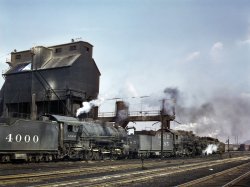
- Kansas City Parade: 1953
- Kansas City, Missouri, 1953. American Royal Parade down Main street, 1953. Picture ... Posted by Maniak Productions - 04/01/2016 - 6:23pm -
![Kansas City Parade: 1953 Kansas City, Missouri, 1953. American Royal Parade down Main street, 1953. Picture taken by my Aunt Macky. [RIP 1931-2002]
(ShorpyBlog, Member Gallery)](https://www.shorpy.com/files/images/american_royal_parade_1953.thumbnail.jpg)
- Six and the City Club: 1906
- Kansas City, Mo., circa 1906. "Kansas City Club, Wyandotte and 12th." We count three up and three down. 8x10 ... Posted by Dave - 06/15/2017 - 8:53am -
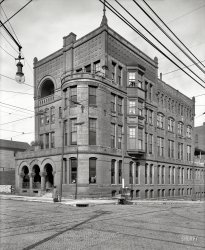
- Mobilized: 1940
- ... several weekend training exercises at Camp Blanding.
Kansas City Icon The iconic sign in downtown KC was restored to working order on ... Posted by Dave - 07/22/2019 - 1:46pm -
![Mobilized: 1940 December 1940. "Soldiers on street corner in Starke, Florida. Boomtown in defense district." Medium format acetate negative by Marion Post Wolcott. View full size.
Piss off, Indeed (Plus added information)Dave,
That guy is wacko. I'm on your side.
My mother-in-law was a St. John and I thought this might be family. Not to be though.
The Western Auto owner, Vincent Selleck St. John, was born in Connecticut in 1892 and died in Florida in 1970.
The soldiers were from Camp Blanding located about 9 miles NW in Clay County. My father was inducted into the Army there in 1945. I served in the Army Reserves and attended several weekend training exercises at Camp Blanding.
Kansas City IconThe iconic sign in downtown KC was restored to working order on July 13th, 2018. The building now houses residential lofts.
[I love my job! - Dave]
Piss off!Gee, I'm glad I only purchased 2 of your overpriced prints before realizing what an asshole you are, Dave!
[So you post a comment about Kansas City under a photo of Starke, Florida (along with the inexplicable attachment of a cable TV contract) and you're complaining about me? I love my job! - Dave]
Look Ma, No HandsThe bike on the right is missing its handlebars! Theft prevention, or did the rider really ride without them?
By the numbersI'll say this one time, you two. Don't make me count to three.
Takes me back, though not so farI worked for Western Auto for 6 months while waiting to be drafted in a later war.
Other sideMy late father used to tell me the way to tell which side of a car the battery was on by looking which side the tailpipe was on. Batteries don't like heat so it was placed opposite where the exhaust manifold was. This only applied to inline engines.
I never asked him why that information was valuable.
Western Auto Will Soon Be GoneThis corner (100 W. Call St) will soon change. Evidence?
Old view -- (different angle) http://cinematreasures.org/theaters/33980
New view -- http://cinematreasures.org/theaters/21944/photos/22406
At least the Western Auto was replaced by a cool moderne movie theatre, and that place is still showing movies.
Western AutoFor my friends and me, the Western Auto was like the new car showroom for bicycles. We were regulars there, looking, kicking tires, beeping horns, being mesmerized by all the chrome, lusting over the Stewart Warner Speedometers and wishing we had one of those big bullet headlights on our bikes.
About This Photograph ... In Groups of TwosThe two men leaning up against the building, left of the front door, appear to be father and son. The identical position of their mouths makes me believe they are making the same statement to the men and boy walking past them.
There is an interesting comparison/contrast between the two soldiers staring at the camera and the two men at far right. Only one of the four is not holding a cigarette, but he likely also smoked.
The Western Auto Associate Store appears to have also dealt in bicycles -- there are some just inside the front door. That would also possibly explain the cluster of bikes sitting outside.
I like the placement of the Shorpy watermark. In my mind it says, "Enjoy Shorpy".
LanguageOne: If readers don't know by now that they'd have to get up really, really early in the morning to get anything over on Dave, then they're more than NOT paying attention; they're daft, drunk, or both.
Which may in fact be the problem here.
Two: I come here not only for fascinating photography, but because it's one of the few places online where intelligence and a startling (and refreshing) lack of profanity rule the day.
May it ever be so.
What are you looking at?Given that about half the guys in the photo look like they're spoiling for a fight, maybe that set the tone for comments.
Mean and CoolEverybody's lookin' mean and cool today in this photo. You can't put anything over on these guys. They didn't just fall off the turnip truck yesterday.
(The Gallery, Bicycles, Florida, M.P. Wolcott, Stores & Markets, WW2)](https://www.shorpy.com/files/images/SHORPY-8c14488a.thumbnail.jpg)
- Grand Avenue: 1908
- Kansas City, Missouri, circa 1908. "Grand Avenue north from Twelfth." 8x10 inch dry ... firm of Van Brunt and Howe, which did a lot of work in the Kansas City area after Henry Van Brunt relocated from Boston. You can just make ... Posted by Dave - 02/08/2017 - 2:55pm -
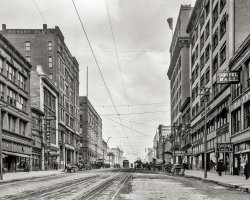
- B-25: 1942
- ... bomber is brought for a test hop to the flight line at the Kansas City, Kansas, plant of North American Aviation." 4x5 Kodachrome transparency by ... Posted by Dave - 08/30/2012 - 4:46pm -
![B-25: 1942 October 1942. "A new B-25 bomber is brought for a test hop to the flight line at the Kansas City, Kansas, plant of North American Aviation." 4x5 Kodachrome transparency by Alfred Palmer, Office of War Information. View full size.
Kansas, not California?The photo was more likely taken at the North American/Army aviation plant in Kansas City, KS (Fairfax) - not Long Beach as the caption says. The white horizontal strip in the background is a graveled levee along the Missouri River.
The photo is probably taken near the old B-25 plant (NW of Fairfax Airport) with the plant to your left and looking north at the levee.
The Fairfax B-25 plant was demolished years ago and the Fairfax airport closed and re-developed into a GM auto plant. Parts of this concrete apron are still there though.
Darby Steel was busy building most of the LCTs to be used in WW2 just to the west of the Fairfax B-25 plant. KCK was a busy place in 1942.
[Original LOC caption for this photo: "A fast, hard-hitting new A-20 attack bomber is brought for a test hop to the flight line at the Long Beach, Calif., plant of Douglas Aircraft Company." Evidently someone got their planes (and factories) confused. - Dave]
For the record ...I did some more reading and the Darby facilities were apparently in the West Bottoms industrial district "south" of the Fairfax plant, where the Kaw River (Kansas River) joins the Missouri River, and not to the west of Fairfax.
One of the Fairfax B-25s returned to KC a couple of weeks ago for an airshow at the Downtown Airport, across the river from Fairfax. One of the WASP ferry pilots showed up for a ride.
http://www.kansascity.com/news/local/story/1398087.html
Aircraft TugWith all due respect to the B-25s, the real hero of this image is the innocuous little yellow aircraft tug. To this day, tugs like this are a fixture on civilian and military airfields, as well as on aircraft carriers. Its basic design has hardly changed for over 70 years and counting.
Ahh, KodachromeI'm always so jealous when I see you've posted something from Kodachrome. That transparency probably looks as good as the day it was processed. What I'd give to be able to get some of the stuff for my 4x5. I'll just have to use up the two rolls of 25 speed I have before the end of next year.
(The Gallery, Kodachromes, Alfred Palmer, Aviation, WW2)](https://www.shorpy.com/files/images/1a35354u.thumbnail.jpg)
- What This Country Needs: 1906
- Kansas City, Missouri, circa 1906. "Junction of Main and Delaware Streets." 8x10 inch ... As you might have guessed from the signs.
That's the Kansas City Times newspaper building in the middle, with the spire thing on ... Posted by Dave - 08/20/2012 - 10:49am -
![What This Country Needs: 1906 Kansas City, Missouri, circa 1906. "Junction of Main and Delaware Streets." 8x10 inch dry plate glass negative, Detroit Publishing Company. View full size.
A Good Five-Cent CigarOf course, only to hold off the chill of what appears to be a frosty day!
Old city streetsI love these old street scenes you select. My grandfather who was born in 1880's had lots of old sayings that meant little to us grandkids. One was "it's everywhere like horseshit." These old photos almost always include somebody sweeping it up. Now I know what he meant.
The Junction.This intersection (9th and Main) was known as "The Junction." As you might have guessed from the signs.
That's the Kansas City Times newspaper building in the middle, with the spire thing on top, even though railroad ticket offices were on the first floor and someone put that "Junction Building" sign on it.
By 1920, the KC Times building had been replaced with the Kay Hotel and it was that building that eventually fell to urban renewal in the 60s.
[Note the faint T on the roof of the Times tower. - Dave]
Vertiginous EgressThat cast iron spiral fire escape on the building with the beehive dome was probably thought safe enough at the time, but, after only a few moments of imagining using it in an emergency, I'm all ready for a nice lie-down in a dark room.
Wells Fargo, and lunch to goWells Fargo wagon to the left (Express!) and the fellow with the apron across the street selling sandwiches from the looks of it (it IS 25 past 1, after all!)
ManvilleI looked over this carefully and I can't see any women at all, out shopping or on the street! It truly was a man's world.
Long gone.I-70 would eventually pass a couple of blocks in the distance and all these buildings were gone by then to make way for urban renewal and ramps down to the interstate. Everything probably went down by 1960 or so.
Kansas City has its share of remaining historic buildings but all the buildings in this photo are long gone.
The Commerce (Bank) Tower is currently on the corner (9th and Main) just beyond Palace Clothing. It went up in 1965 as the area was redeveloped into parking lots, parking garages and your typical 60s era highrises.
My mother was working near this location in the early 1950s and she was still using the streetcars (the more modern versions) then. Streetcar service ended by 1957.
Everything's up to date in Kansas City"They gone about as fer as they can go
They went an' built a skyscraper seven stories high
About as high as a buildin' orta grow."
Horses back thenHad a lot to watch out for, didn't they?
Downward SpiralIn about the middle of the photo, towards the back, there seems to be a spiral staircase fire escape. I don't believe I have ever seen one like this.
Ladies of the AfternoonWhat I continue to find amazing are the lack of women in these downtown type pictures. I see only two in front of the Junction ticket office.
R.R. ticket officesThe Chicago & Alton, Missouri Pacific, Santa Fe, Milwaukee Road, Wabash, and a joint office of the Frisco and, I think, the Rock Island.
Nothing left?A tour up Delware to Main on Google Street view shows that there is nothing of this scene left except for the names of the thoroughfares. It's all a flat expanse of 4- and 6-lane asphalt, empty lots. and what look like low-rise warehouses. Automobiles roam, supreme in the environment.
This gives me hope. Perhaps in another century, the auto will be as rare on our city streets as the horse is today.
What this commenter needsA Stetson hat and five-cent cigar make for a winning combination.
MessengerThere's a messenger boy on the lower right, no doubt hurrying to the red light district. Quick, call Lewis Hine!
Kay Hotel demolished... in 1954, according to the Kansas City Public Library, which has a few more pictures of this intersection in its images archives.
Dave, I love Shorpy!
IncredibleThe detail on the lamp standards, fire hydrants &c is wonderful. I'm terribly curious about what appears to be a pedestrian bridge in the background -- does anyone know what it might have connected?
(The Gallery, DPC, Kansas City, Stores & Markets, Streetcars)](https://www.shorpy.com/files/images/4a13233a.thumbnail.jpg)
- Thoroughly Modern Charlie: 1922
- ... was probably extra)
This ad, clipped from a Kansas City newspaper, is interesting not just for the product but also who ran ... Posted by Dave - 10/20/2024 - 5:03pm -

- Missouri Produce Yard: 1943
- March 1943. "Kansas City, Missouri. Produce freight yard used by the Atchison, Topeka and Santa Fe ... Yard and is now called Berkeley Parkway in this part of Kansas City).
Groceries "And stop on your way home for a quart of milk." ... Posted by Dave - 07/31/2024 - 11:16am -

- Skyline: 1943
- ... March 1943. "Amarillo, Texas. General view over the city and the Santa Fe railyard." Acetate negative by Jack Delano for the Office ... Amarillo really is that flat. It's almost uncanny. Makes Kansas look like the Swiss Alps.
Wagon Top! Note the unusual B&O ... Posted by Dave - 09/22/2024 - 4:41pm -

- Mail Pouch: 1910
- ... View full size.
Everything's Up To Date In Kansas City And in Columbus, Ohio as well. In the background is the rear of an ... Posted by Dave - 07/25/2015 - 2:40pm -
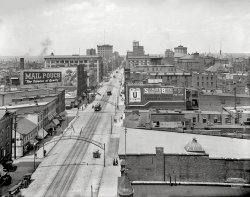
- The Plaza: 1912
- ... conditioning made them unnecessary.
I'm not in Kansas anymore It is photographs like this that drive me into sublime ... dip. I think Joseph Pulitzer gave the fountain to the city in 1916.
Ancien Pauvre This is certainly not the Plaza of nouveau ... Posted by Dave - 08/15/2012 - 2:40pm -
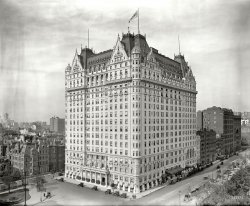
- Argentine Yard: 1943
- March 1943. Kansas City, Kansas. "Argentine Yard, Santa Fe R.R. -- Night view of the departure yard on ... Posted by Dave - 07/29/2024 - 6:59pm -

- Millie Williams: 1943
- March 1943. Kansas City, Missouri. "Mildred Williams, one of several women freight handlers ... would surely have surpassed them all.
Stowe Building, Kansas City That's the Stowe Building next to her shoulder.
(The ... Posted by Dave - 07/23/2011 - 6:07pm -
![Millie Williams: 1943 March 1943. Kansas City, Missouri. "Mildred Williams, one of several women freight handlers employed at the Atchison, Topeka, and Santa Fe depot." Medium-format negative by Jack Delano, Office of War Information. View full size.
ButtonedWhat does the button on her coat say?
["404." - Dave]
Rough JobThis is a service known as LCL(Less than Carload Freight), a business practice discontinued by the railroads by the late 1960's. Single boxcars were loaded with freight from several different shippers all sending to the vicinity of a certain area, and the cars were then unloaded at centers like this one, the freight sorted and then put on trucks to the final destinations. This service was very labor intensive and therefore unprofitable; railroads lost money on it even during the war years. These days rail customers have no choice but to ship in bulk, one car to a customer.
All I can say is that she must have been one hell of a tough woman, working probably 48 hours a week or more dragging freight off those cars. The items handled could have been anything, and most were probably heavy, like those solid steel pieces on the cart to her right.
BackbreakerMy dad tells the story of when he was in high school (around 1943) of helping my great-uncle unload a freight car full of red brick that he was building a house with.
It had to be unloaded in one afternoon. Dad is 83 now, and says that was the most bone tired he ever was. He says pulling slabs in a sawmill was a close second, though.
Muscles of steelShe would be one tough woman. Nobody had better try to mug her on her way home. She would just lift them off the ground, toss them into a corner and beat the stuffing out of them!
Dave, thanks for showing women in non-traditional roles from way back when.
DickiesI'm betting these are actually men's jeans Mildred is wearing. Very stiff and uncomfortable. Check out the safety pin holding her sweater closed.
Youths of today have no idea how physically hard their grandparents & great-grandparents worked.
Freight coutureMildred has coveralls on over her street clothes. See left leg and waistband. Just love this site. Father-in-law was with ATSF for 40 years an this is the way he dressed.
Action shotThe simple composition of this photo is strong and dramatic. Notice how the "V" lines of the freight-car roofs direct the eye to the subject of the photo, Miss Mildred with her hand-truck.
The open sky overhead could be seen to represent escape, freedom, or even heaven, but Miss Mildred, caught in this photo, is forever earthbound, toiling along in the tunnel between the train cars to this very day.
I doubt if the photographer thought about all that when he snapped the photo. He just looked through the viewfinder with his photographer's eye and thought, "That looks good."
Modern times.I last worked on a LTL freight dock in the 80s and we were still using the style of two-wheeler in the photo then. They are clumsy things to use when facing the "right" way and the way Millie is using one even more clumsy.
Once loaded correctly, you'd be surprised how easy you can wheel a crate around like the fellow on the right is doing though.
There are several "Mildred Williams" of the appropriate age (88-95) listed in the KC phone book. If this one is still around and one of those, let's hope she Googles her name someday and arrives "here" for a nice surprise.
That's a heavy load.If memory serves, the type of hand-truck Ms. Williams is pulling was called a stevedore, and was named for the cargo loaders on ships docks. I used to use one back in the 70's for moving 55 gallon drums. It must have weighed 100 pounds by itself, and although it could be easily balanced, there was still a lot of weight to by pulled. Couple that with the fact that those wheels are solid steel, and you've got the makings of some stiff muscles by days end. Today they are made of formed aluminum with inflatable tires and weigh 1/10th what they did. Today, her partner would be guiding an electric pallet jack. or driving a fork lift.
Millie is beautifulAfter all the critiques of women's attributes that I've seen in these comments, I'd just like to say that I believe Millie was a woman to be reckoned with, and given the advantages of education and wealth would surely have surpassed them all.
Stowe Building, Kansas CityThat's the Stowe Building next to her shoulder.
(The Gallery, Jack Delano, Kansas City, Railroads)](https://www.shorpy.com/files/images/8d26529u.thumbnail.jpg)
- Walnut Street: 1906
- Kansas City, Missouri, circa 1906. "Walnut Street." Home of the $2 hat. 8x10 inch dry ... today:
https://maps.google.com/maps?q=11th+and+walnut,+kansas+city+mo&um=1&ie=U...
& some info about the building at ... Posted by Dave - 08/08/2012 - 1:02pm -
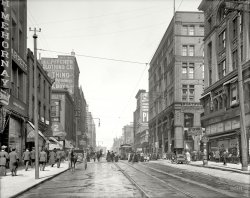
- Forest Brook: 1956
- ... first grade about 20 miles west of Hauppauge. The New York City Board of Education had a much less relaxed dress code. Boys from first ... New School I started the first grade in 1954 in rural Kansas. We were in a building that had been built in 1911 and only housed six ... Posted by Dave - 02/14/2013 - 7:14am -
![Forest Brook: 1956 November 8, 1956. "Forest Brook Elementary School, Hauppauge, Long Island. Classroom and teacher." For those of a certain demographic, this may strike a chord. Large-format negative by Gottscho-Schleisner. View full size.
We never did that.I grew up in the suburbs around Akron, Ohio, and we never had a bomb drill or duck-and-cover drill ever. All of my peers that grew up in other places had those drills, which has led me to a couple of possible theories. One, that we had some sort of pacifists in our local administration that refused to take part in the Cold War(unlikely). Or two, that we were so close to potential industrial targets that there was simply no point in hoping for survival... Better to go out in the first flash.
[Never had them in my grade school years 1952-1960 in Larkspur, California, either, nor was I aware at the time that they were going on anywhere. -tterrace]
Lighting fixturesWe had very similar fixtures in my Elementary School about ten years after this, ours had a large bulb with the bottom painted silver sticking through the center though.
They were probably ancient even in 1966.
X marks the spotI'm not sure if it looked that way in 1956, but Forest Brook today has a strange shape, what you might get if Picasso or Dali had been asked to draw the letter X.
Hauppague today is a densely populated community, home to most of Suffolk County's government (though Riverhead is the actual county seat) and a huge industrial park, but back in 1956 it was on the frontier of suburbanization. I wouldn't be surprised if some of the students in this picture were the children of farmers.
You will not leave this house dressed like thatIt would be three years before I entered first grade about 20 miles west of Hauppauge. The New York City Board of Education had a much less relaxed dress code. Boys from first grade on had to wear ties. Jeans and sneakers were not permitted. On school assembly day everyone was required to wear a white shirt or blouse and the boys had to wear red ties. Of course by the time we were graduating from high school there were still strict dress standards, but they only applied to the teachers.
Smelementary SchoolThose wooden desks were washed and cleaned before classes three months ago, and the floors are waxed weekly.
All the girls are in skirts or dresses, and the boys are well groomed and always polite. After all, no one wants to get called down to the school office!
Plus, there's a great lineup of cars out the window, in case a little daydreaming is in order, but only for a few seconds at a time. By the way, you can smell today's newfangled hot lunch almost ready to serve, down the hall.
Let there be photonsMy elementary school (Horace Mann in Burbank, Calif.) had the same light fixtures, although we had four to a room. Each contained one ≈500 watt bulb; the bottom of the bulb was obscured by a silver coating. When a bulb was nearing the end of its service life, it would usually emit a high-pitched squeal. The teacher would then cycle the light switch off and on several times, killing the bulb and throttling the distracting squeal.
Reading MaterialMost of the children have notebooks, many children seem to have the Spell and Write workbook, and the young man in the lower left (just behind the girl in the foreground) has the Air Raid Instruction booklet on his desk.
My First Year of School1956 was my first year of school in Houston. Would have loved to have been able to wear blue jeans and shirt tails out but HISD rules at the time (and almost all the way through my HS years) said no blue jeans, no t-shirts, no shirt tails out for boys and skirts/dresses only for girls.
Hard to believe especially since the schools weren't air conditioned in HISD except for offices and a few other classrooms (science for one)until after I graduated in 1968.
No duck and cover drills for us until the Cuban missile crisis when we were told Houston would be a first strike target due the refineries throughout the Houston area. We had an air raid siren right next to the window in my 5th grade class that went off each Friday at noon. I also thought to myself that if the Russians were smart they would attack at noon on Friday!
Star pupils or problem children?Teacher has all that space in front of the classroom for her desk but it's right up close to those pupils at the far end of the classroom. Even with the photographer present, the kids appear to be gazing out the window. Maybe she needed to be that close to keep their attention for any length of time. I wonder if modern medicine is overused in favor of such simple solutions.
Maybe I'll send the first grade picture (1960) from my Catholic school in New Jersey. It's a bright, clean classroom like the one shown here but it's packed tight with baby boomers, all in navy blue and white uniforms, with Sister in her black and white habit up front.
1956 RebelAlright, who's the non-conformist on staff who just had to park facing the wrong way?
Sturdy Desks and the "Good Old Days"Those sturdy desks are perfect for the inevitable "Flash Drills" of the era, in which the principal would come into the room unannounced and write "FLASH" on the blackboard, causing all of us students to "duck and cover" to avoid instant nuclear incineration. I'm not sure how much good it would have done in a real attack, but it was the only tool in the drawer.
Also, I'm surprised the windows don't have the standard heavy blackout curtains, which were handy not only for viewing nmovies but to keep enemy bombers from spotting stray lights at night.
And a decade laterI started public school a decade later, in a building constructed in 1961. And it was exactly like this, light fixtures, desks, and all. Most of the teachers were young then (and exactly one man, who I got in fifth grade) but I started out with Mrs. Lord, the white-haired wife of the principal, who could have stepped out of any 1910 school administrator picture with naught more than a change of collar. However in my day the fellow with the open shirt front there would have been made to neaten himself up.
Beautiful Schools but the Russians are coming!I began my second semester of kindergarden in January of 1953 in newly built grade school on the west side of Detroit. We immediately began having fire and air raid drills. For air raids we descended into the basement of the school which was actually the main tunnel of the air circulation system. Some times when we went down the stairs during a drill, the big fan would still be rotating after being shut down. We had to sit along the walls and cover our heads. To condition us further the lights would be turned off for a short period of time. I switched to a newly built parochial grade school for the fourth grade on. No basement, so we sat in the main hallway between the class rooms and covered our heads. Both schools had class rooms identical to Forest Brook. To add to the tension, the nearby Rouge Park had a Nike missile battery. The missiles were normally hidden behind a high earth berm, but they were visible when frequently pointed skyward for testing. The AM radio frequencies of 640 and 1240 were permanently etched into our memory.
DrillsI'm exactly the right age for these memories, but except for a few very early instances that were termed "air raid," all our drills were of the fire kind. No duck, no cover - and this just north of San Francisco, with its own battery of Nike missiles by the Golden Gate - in plain view if you took a spin along the Marin Headlands. We all just marched outside. The only time we had to put our practice to use was for a 1957 earthquake centered just south of SF but sharp enough in Larkspur to get us squealing in our fifth grade classroom before the alarm sounded and we made our orderly exit.
"Silver Tooth"I was in the ninth grade in fall of 56. All of the new schools I attended in the late 40's and 50's had those windows and the 9 inch floor tiles. I believe the teacher's desk was in that position only for this pic. One memory came to me in a flash when I saw the tiles. In the 4th grade on the last day of school as I was swinging between desks I did a face plant on the green floor tiles. The impact broke off two of my front teeth below the nerves and the family dentist fixed them with silver caps that stayed that way until I turned 21.
Blue Jeans?I was in 5th grade at the time, in a far western suburb of Chicago. What I remember was the enormous spending on shiny new schools back then. My mom was a teacher, back when teaching was a respected profession, teachers were proud of what they did for a living and grateful for the $6,000 a year they were paid.
That and the rule against blue jeans. Strictly verboten in my school system. They looked "hoo-dy", pronounced with "hoo" as the first syllable, and were a a well known precursor for the dreaded juvenile delinquency during adolescence and a life of crime and depravity later on. Without that rule, thank goodness and a vigilant school board, I probably would have a criminal record by now.
Good Ol' '56I was in third grade in Hempstead, Long Island then. Ike was president and the world 'champeen' Brooklyn Dodgers would win another pennant only to lose once more to the Yanks. Anybody who wore dungarees (as jeans were called then) in my school district would have been sent home to change to proper attire and an open shirt would catch you a stiff reprimand. Nobody knew what a school bus was and schools were not in the restaurant business for anybody. There was a lot to like about those days.
Fond MemoriesI was in 1st grade at that time and our classroom in suburban Chicago looked very much like this one. Someone mentioned getting called down to the office. There was nothing worse than hearing your name on the PA system to report to the principal. Every kid in school knew you were probably in deep doo doo. As for the non-conformist staff member who backed into his spot, these types have always been around and still are today. They'd rather waste extra time and endure the hassle of backing into a parking spot just so they can pull out with ease at the end of the day. Never understood that logic.
The Joys of childhoodI would have been 9 years old when this photo was taken. I was attending "Summer Avenue School" at that time. It was an old three story brick building. We had the kind of desks that bolted to the floor so they couldn't be moved even if you wanted to do so. The seat was actually part of the desk behind you and folded up automatically when you stood up. The top of the desk was hinged at the front so that you could lift it up and put you books and such inside. Oh Yes, they had the obligatory inkwell hole in them as well, but never any ink.
Summer Avenue School still stands but is now known as Roberto Clemente Elementary School.
The desksStarting I guess in the late 40s that blonde style of wood came very much into vogue for furniture. Notice, they're the first generation of school desk withOUT a hole for an inkwell. We had ball point pens by then, no more dipping a nub into india ink. And no more opportunities for dunking the pigtail of the little girl in front of you into the ink!
The furthest cornersAh, those desks. In the later grades of elementary school we ate our lunches in the classroom, and the kid in front of me used to stuff the parts of his lunch he didn’t want into the deepest recesses, behind books and other trash. It got very ripe, and one day the teacher followed her nose to Robert G.’s desk and made him excavate the smelly mess. I will leave the rest to everyone’s imaginations.
4th grade for meDecatur Street elementary. I think the building was probably built at the turn of the last century. And probably the teachers. We had the well worn student desks that you find in the antique shops now for a pretty penny. The one with the ink well and indentation for a pencil with the seat back and foldup seat on the front of your desk. We had 12' ceilings, oiled wood floors that the janitor put sawdust down on daily to use his pushbroom on, kept the dust down.
Old School, New SchoolI started the first grade in 1954 in rural Kansas. We were in a building that had been built in 1911 and only housed six grades. The 7th and 8th grades were in the high school. The bathrooms, the lunchroom, and the art room were all in the basement, and we had music in a one-teacher school building that had been moved into town and put behind the school. The 1911 building was probably a horrible firetrap, although there was a metal fire escape on the back from the second floor down. The district built a new school in 1956, and we moved in in February 1957, when I was in the third grade. It looked much like the one in the photo, except that we had metal desks. No dress code--nearly all the boys wore jeans. That 1956 building is still in use, along with the 1923 high school. Of ocurse, they house far fewer kids than they did then.
Several years laterI was attending a Catholic school in a much older building further west on Long Island -- still vividly remember our "duck & cover" drills as I was the smart-alack who asked how a wooden desk would keep us from burning to a cinder.
As for the cafeteria, no hot lunch then; if you forgot your brown bag (no lunch money; you were not permitted to leave the premises) you might have been lucky enough to be escorted across the street to the convent for a PB&J sandwich.
The uniforms were ghastly -- white shirt, dark maroon tie with the school shield on it, and dark grey slacks with black piping down the outside seam. Girls wore a white blouse with a snap tie, grey plaid skirt (that was always rolled up at the waist after leaving the house, and a matching bolero. Once out of sixth grade boys wore a blue plaid tie & girls could wear a -- *gasp* -- blouse of color.
Reminds me of another picture here of young girls wearing skirts in the dead of winter; evil little Catholic boys that we were, we'd spend the lunch hour in the schoolyard assaulting the bare-legged victims by snapping rubber-bands on their frozen legs.
Not non-conformism. Safety!I've worked at a school for years and even though I'm not much of a rebel, I've always backed into the parking space. The logic is simple: you have to back up when you arrive or when you leave, and it's safer to back *in* to a space when there are few or no children around (an hour or two before school starts) than to back *out* of a space when children are running all around at the end of the school day (of course, one should triple-check either time). I often back into shopping center parking spaces using the same reasoning: if there's no one around when I arrive, it's safer to back up then than later when there might be a lot of people about. I knew a man many years ago who fatally backed over his 4-year-old daughter in their driveway and that tragedy changed my thinking on this permanently.
Reminds me of...Sutton Elementary School, southwest Houston, 1971 to 1973. The building was built in the late 50s and had those same big windows, but by that time we had the one piece metal desks with the big opening beneath for your books.
Few years laterI was in the first grade in a Catholic school in NYC. We had fire drills but no under the desk kiss your butt goodbye stuff. Nuns ruled the roost in those days. Midget Gestapo agents all in black with a yardstick bigger than them which was used to get you back in line if you misbehaved. I remember the first day of 2nd grade while us kids were waiting for school to open and my mom approached me to wipe my nose and the nun smacked her hand saying "he belongs to us now!" Ah memories...
Patty Duke, Ben Gazzara, Gene Hackman were some of the actors who lived in the area, Kips Bay, and might have even attended my school at one time.
"Snaggletooth"I can sympathize with jimmylee42. I broke a front tooth in much the same way at my school in the fourth grade. It was the winter of '63-'64.
When the weather was exceptionally cold, they would open the gym for the early kids to come inside before classes started. Although the details are vague now, someone said I was tripped by a bully while I was running around. In a family of four siblings my folks couldn't afford to get my missing tooth capped for years. So one of my nicknames throughout grade school was "Snaggletooth"... not one of my fonder memories. I finally got a white tooth cap just before I started senior high after we moved to Florida.
I wonder how my Alabama classmates would remember me now?
Yes, the Memories!I would have been right in this age range, near as I can tell from looking at the kids. That would have made it my first year out of parochial school, escaped from 4th grade under the rule(r)Sister Rita Jean, she who was Evil Incarnate.
Best memory was teacher telling me, "David! Stop moving your desk around. It makes me think we're having an earthqu... Everyone - outside!!"
DaveB
WonderfulGrade school in Alexandria, Louisiana. Very familiar classrooms, with the good Nun up front to keep [or try to keep] us on the right path.
Bayou View SchoolThis reminds me of Mrs Powell's 2nd grade class at Bayou View School in Gulfport, Ms, c.1955.
Fast ForwardTwenty years later I attended a school built in the early 1940s. This reminds me of those old classrooms in some respects with the desks all lined up in rows, large windows and undoubtedly a large slate chalkboard just out of view. I notice that the teacher's chair is a sturdy wooden straight back chair - no comfortable office chairs here! Also, only a two drawer filing cabinet? I don't think I've ever seen one that small in a classroom. I teach school now and while this brings back memories (even the light fixtures), it's amazingly different today.
Green ThumbThe teacher has quite a spartan setup, but I love the line of flowers along the windowsill! What a lovely touch that would be in a classroom.
This was a fun photo and I enjoyed the comments. My parents were born in 1954 and I really like seeing and reading about what that might have been like.
I grew up in that town!I didn't go to this school, but grew up in Smithtown--where this school actually was; not Hauppauge. I was in elementary from 1990-1995, when times were much different. As a teacher I love seeing how it was then.
Love this photo but makes me sadIf I could push a button and go back in time and be someone someplace in the past, I'd be on my way to being one of the kids in that classroom. This is public school education when it was about education.
(The Gallery, Education, Schools, Gottscho-Schleisner, Kids)](https://www.shorpy.com/files/images/SHORPY_5a24730u.thumbnail.jpg)
- 101 Broadway Pharmacy: 1957
- ... mouth open and lights out to understand why.
Not in Kansas anymore The article below is from page 3 of the Sunday, December 30, ...
The 1930 U.S. Census shows him living in Hillsboro City, Washington County, Oregon. He married at the age of 21, it shows him as ... Posted by Cazzorla - 06/29/2014 - 5:37pm -
![101 Broadway Pharmacy: 1957 I purchased this 8 x 10 print at the swap meet. On the back is printed:
Mr. and Mrs. Cliff McCorkle, proprietors of the 101 Broadway Pharmacy, Richmond, Calif., getting an order ready for delivery. 5 November 1957. Photographer: Pfc. Barbara A. Warner, Sixth US Army Photo Lab, Presidio of San Francisco, Calif. Official US Army photograph. View full size.
"Fling"?Somebody is going to have to convince me that it's really for feet.
SquibbThey were an official ER Squibb Vitamin Headquarters. Having grown up next to the factory in Brooklyn, I recognize the 3 column logo.
My color versionI've been getting into colorizing photos. If a product name was legible, I looked up references of old packaging on google to try to get the colors as accurate as possible. Some of the hair care products and lotions I had to fudge on it because I couldn't find them, but most of the other stuff is accurate. I had a lot of fun doing it and I think the color really adds to the photo. It was my intention to get it as accurate as possible. Check it out:
https://www.shorpy.com/node/18065
ImpressedI am happy that this photo has been well received. I never thought that I'd get to see a color version, or a photo of the photographer! I have a few more pictures from this collection that I will share sometime.
Divinity memoriesAs a kid growing up in Mississippi in the 1950s, divinity was home made candy. Sugar, eggs whites, corn syrup, vanilla, sugar and pecans combined to make a divine candy. I haven't visited Mississippi in 25 years, but today there is always the hope someone will bring divinity to a church supper. Maybe I should just make some tonight.
Top GunkI can't see any in the photo, but I bet they carry Dapper Dan pomade.
S&HAnd they give out Green Stamps.
Sales no longer allowedNearly 50 years from the date on this picture, Richmond enacted an ordinance that prohibits the sale of tobacco products in establishments with pharmacies. You have to go to El Cerrito or Albany now for your nicotine fix.
Why?A very odd subject for an official Army photograph. Since Letterman Army Hospital had a complete pharmacy and all military personnel stationed at the Presidio would have had access thereto, I'm left to wonder why this shot was taken.
For Your HealthGet your Myadec vitamins here! Only $85.50 for the economy size! That amount equates to $723.86 in today's dollars!
Gone but not forgotten, until now.Clove Life Savers I guess that flavor is not popular any longer, but I do remember purchasing them in the past but not really sure why?
Coffee Time!Am I the last living human who remembers the taste of coffee-flavored candy? It was pretty good, actually.
...and is there ANYBODY who ever ate Clove Life-Savers? They musta sold okay, but yikes!
Can't rememberthe last time I saw a package of"Clorets"!
"Brusha, Brusha, BrushaWith the new Ipana."
CloveI remember clove gum, but not the Life Savers. The thing that strikes me is the great variety of 1950s cigarettes in the back--Camels, Kents, Cavaliers, Pall Malls, Marlboros, L&Ms, and Herbert Tareytons.
RepurposedAppears the address still exists, but the building is now a Planned Parenthood office.
Divinity candyWhat was that? I don't remember them. If you eat it were you guaranteed to go to heaven or were they just sold to Priests?
[Divinity. -tterrace]
Clove Lifesavers and other flavorsI remember very well getting the Lifesavers Sweet Story Book every Christmas back in the 50s. It was a book-shaped box that opened and revealed 10 rolls of Lifesavers. They always included Clove, Wint-O-Green, Butter Rum and Butterscotch, 5-flavor, Orange, and others. Clove and Wint-O-Green were my favorites, and always saved until last.
We were neighbors!I lived in Richmond in November 1957 (I was 4 at the time). I wonder if my folks ever shopped here? Shoot, maybe my mom was standing just off to the side when this picture was taken (she was always kinda shy).
Tough TownAh, Richmond. I grew up just south of there, in Albany. Always a tough place: factories, warehouses, oil refinery. Best part of Richmond for me was that it was where we got on the Ferry to San Rafael on the way to Stinson Beach most Sundays.
Looking for a certain productI was hoping to catch a glimpse of the cold and flu products near the vapor rubs, to find 4 way cold tablets. My mother swore by them for any signs of a cold coming on. Take the 4 way pill, get under a heavy blanket, and sweat the cold right out of you. And believe it not, they actually worked! Does anyone else remember them?
Old Time products!Amazing how many of those items are still available and how many are gone. I was 11 years old when that picture was taken. If it didn't say where it was from it could have been from any Drugstore in America at that time. I know there was one across from the school I went to in Chicago at the time that had that same kind of goodie rack and one closer to my house same thing.
Neighborhood pharmacy!I lived just a few blocks away from this pharmacy from birth to age 20! My folks undoubtedly knew the McCorkles! Very cool photo!
Wint-O-Green memoriesAh! The counter candy stand of my youth.
Separate comments here each touch on one part of the story, but marketing ad-speak nowadays has dropped the use of "breath-mints" as a catchall.
Yes, all those packs of cigarettes often got sold with strong breath masking mints, candies and gum.
Let me also make a nod toward the LifeSaver Sweet Story Book. At Christmas we each got one and could always identify it although wrapped. Opened last, its contents assisting in thoughtful appraisal of our acquired loot. We called Wint-O-Green "spark-in-the-dark." Chew some with your mouth open and lights out to understand why.
Not in Kansas anymoreThe article below is from page 3 of the Sunday, December 30, 1956 issue of the The Salina Journal. By the time Barbara returned to Hays, Kansas in 1961 for her mother's funeral (her father had died in 1954), she was known as Mrs. Barbara Constantin of San Francisco.
There was a particular smell and a particular coolnessthat hit you when you entered a drugstore of that era -- I can't describe it except that it was very clean smelling. Regardless of whether the store was a Rexall or a Walgreens or a local independent, the smell was the same -- very pleasant. I always associated it as a cross between the medicines that the druggists were compounding (always in white tunic like in the picture) and the soda fountain that was inevitably part of the store. There was also a coolness to drug stores when I was growing up (1950's). A lot of stores were still not air-conditioned at that time, especially if they were not a chain or franchise, but it seemed to me that drug stores always felt cool. When you sat at the fountain, the marble or the formica or tile of the counter was always cold to the touch. You go into a drugstore today and the smell and that coolness just isn't there.
Have a cold?That Vicks Vapo Rub and Mentholatum were Moms favorites for a chest cold. First was the application to the chest just before going to bed so the vapors could work overnight. If that didn't work, the next step was to put a spoon or two of Vicks or Mentholatum in a large bowl, add hot water, and have me breath the vapors with a towel covering both my head and the bowl. It usually worked to clear out congestion.
My High School Addiction --Wint-o-GreensAh LifeSavers. Through the early 60s. I went through roll after roll of that addictive goody.
Cliff & Lola McCorkleOur pharmacist is Clifford W. McCorkle, born in Tygh Valley Precinct, Wasco County, Oregon on June 6, 1906 to farmer Rufus W. McCorkle and his wife Jessica L. McCorkle. He had two older brothers: Calvin, born in 1891, and Lester born in 1892. He was still living with his parents in 1920, but they are all shown as living in Wapinitia, Wasco County, Oregon.
He graduated from Oregon State University with a degree in Pharmacy on June 3, 1929. The photo below is from his senior yearbook.
The 1930 U.S. Census shows him living in Hillsboro City, Washington County, Oregon. He married at the age of 21, it shows him as a lodger in the home of John Kelley, but his wife is not listed with him. He is already working as a pharmacist in a drug store. In 1931 he is shown with his wife Lillian living at 297 E. 39th Street in Portland, Oregon.
The 1940 U.S. Census shows that he was residing in San Francisco by 1935. In 1937 he was working at Birnbaum & Son Drugs at 757 Market Street, San Francisco, CA. He was living with his wife Lillian at 511 Leavenworth in San Francisco.
In 1940 he was working as a pharmacist in a drug store in San Francisco, California, he was making $2,185 a year, and he was now divorced. His residence is at the Lyric Hotel.
In 1955 he worked at Bellini's Bayside Pharmacy and his wife Lola is a clerk in the store. They resided in Oakland, California at the time.
He died on January 10, 1972 still in Richmond, Contra Costa County, California.
(ShorpyBlog, Member Gallery)](https://www.shorpy.com/files/images/06232014115141.thumbnail.jpg)
- Vacation Wagon: 1964
- ... got in our in our '53 Chevy coupe and went from New York City to the SF Bay Area, mostly along US 40. Entertainment consisted of ... to '87. I think the longest trip we took in it was from Kansas City to Washington, DC and back.
Wagons We had a 1956 Ford wagon, ... Posted by Dave - 05/31/2022 - 1:09am -
![Vacation Wagon: 1964 Our annual salute to the start of vacation road-trip season, first posted here 15 years ago. Everyone buckled in? Let's go!
"Great Falls, Montana. Return after 3 weeks Vacation. June 27, 1964." This Kodachrome of a 1960 Chevrolet Parkwood station wagon is from a box of slides found on eBay. View full size.
family trips in those carsI also spent some hot days in a car like that on the way to the grandparents. My mother flattened the second seat, put a mattress on the floor and loaded three of us and the stuff in on top of it, us and the stuff equally loose and not tied down. We whined and fought and slept our way to Cape Cod from southern NJ. My father always "had to work" (they were her parents), so she did the drive alone, I think maybe 12 or 16 hours? Seemed like forever.
NostalgicThese people still had a bright future ahead of them, full of great hopes for the days to come. They hadn't gone to the Moon yet, and to them, by 2007 we'd have personal helicopters and robots would run everything. The possibility of the President being indicted for a crime was unthinkable. My job as a web designer hadn't even been invented yet.
The lawn looks like it's literally astroturf. Were the colors really like that, or is it an effect of the kodachrome?
Holy cow! We had a 59 chevyHoly cow! We had a 59 chevy stationwagon back in the day. Does this bring back memories. We would drive to Florida from Virginia a two day trip usually in the heat of the summer to visit grandparents. Five children two parents no ac. Damn!
[This is a 1960 Chevrolet. - Dave]
DeflectorsDoes anybody know/remember what the deflectors left and right of the rear window were for? These may have been an aftermarket item.
It is amazing how well the colors in this slide are preserved after almost 50 years. It looks like Kodachrome all right, including the telltale blue cast in the shadows
The Astroturf look......to my eye, seems to come from the little flowers (or toadstools?) that are in the lawn. At the smaller image size, they look like specular reflections, making it seem like the grass is shiny.
[The white flowers are clover. - Dave]
1964As I remember it, this was less than a year after the assassination of JFK, there were race riots in the south and we (I was 14) were all starting to question attitudes towards women, blacks, hispanics, homosexuals and the culture we had grown up with. One of the more minor cultural things was the importance of your front lawn.
50 years?I was born in 1964, and trust me, it hasn't been 50 years since then, yet.... ;)
Re:DeflectorsThe deflectors on either side of the rear window were intended to blow air across the rear window to prevent snow from accumulating. A similar deflector is often fitted along the roof on station wagons from the 60s on. I think they were usually a factory or dealer option in later years, but I really don't know specifically about this model or when they might have first been used.
OK, 40 years.Sorry, I was too vexed on the year of manufacture of the car.
I remember that someone in our street had the sedan version of this Chevy. Like any 8 year old, I was fascinated by the winged tail and the panorama windshield. You didn't see many of these in Europe around 1960; everbody, including my father, was driving Volkswagen Beetles. (He later had a new Ford Mustang 1964 1/2 , with a 289 ci V8 and a four speed box, rally pack and (optional) front discs, which I found very impressive at the time. A real gas guzzler by European standards.
Family TrucksterThis is probably what Clark Griswold's dad took the family on vacation in. It's a 1960 Chevy, and I'm guessing it's a Kingswood model. The Brookwood was the more stripped down model and I think the "full dresser" was called a Nomad. This one isn't completely chromed-out and it has the small, dog-dish hubcaps so I'm thinking it's the middle of the line model.
I think the rear air deflectors also helped keep exhaust gas from entering the rear passenger compartment when the vehicle was moving with the tailgate window was lowered. Though it doesn't look like there's room for anybody in the third row of seats for this trip. With the window up they also helped keep the rear glass clear of snow and dust.
These are Parents of the Year......in my book. Can you imagine going across country now without all of the luxuries and Wendy's and portable DVD players and Nintendo and cell phones and credit cards?
These parents did it all the HARD way...and I'll bet they made a lot of memories that summer!
My jaw droppedOnce again the red stationwagon family blows me away. The color composition here is perfect.
Chevy ParkwoodThis is a 1960 Chevrolet Parkwood. Parkwoods and Kingswoods both use Bel Air trim (mid-level). The Kingswood, a nine-passenger wagon, has the third-row rear-facing seat, and two steps on the rear bumper (one on each end just outside of where the tailgate would come down). Less obvious is that all Kingswoods have power tailgate windows, an option on the other Chevrolet wagons.
I still drive a '59 ChevyI recommend owning one. In 2000 We took the ultimate road trip with mine from near the Canadian border in Washington State through the desert to Las Vegas and back up through California and Oregon. There really is nothing like seeing the U.S.A. in your Chevrolet. Cruising the Strip in Vegas was a blast. We might as well have been driving a space ship with the reactions we got. Sadly, these Chevrolets were mostly scrapped and very few survive.
60 ChevySadly, the third row seat had not been invented as of yet and the deflectors were used to deflect air into the rear of the stationwagon at slower speeds. I may not be an expert but I'm old enough to have ridden and slept in the back section of a folded down stationwagon. We didn't know about SUV's yet.
Chevy WagonChevy's Parkwood and Kingswood wagons could both be had with a third-row seat. And back then, for the record - wagons WERE the "SUVs" of the day!
[According to the 1960 Chevrolet sales brochure, only the Kingswood was available with third-row seating. The International Travelall and Chevy Suburban Carryall were two of the SUVs of the day. - Dave]
The luggage rackis something you don't see anymore. It hung on the wall of the garage when not in use. Once my dad, who was in a big hurry, didn't secure the tarp on top properly...
We played car games, like Alphabet, Road Bingo, and License Plates, read books, colored,sang songs and squabbled. You took your chances with local restaurants. We hadn't got used to entertainment on demand, so we didn't miss it.
And to Dave Faris: It's the film. I once assured my daughter that colors when I was a kid were the same as today. "The Fifties," she said, in her narrator's voice, "were an oddly-hued decade."
Slide ConversionHow does one convert slides to digital photos? Any website links or advice?
[You'd use a film scanner. I used a Nikon 4000 ED for this one. - Dave]
Family TrucksterWe had a green Ford station wagon, not nearly as nice as this, and with our family of six, it was a masochistic experience to take family vacations. Every summer we said that's it, we will never do this again, until the following summer when we did it again. The best part was arriving home again, but I will say that NOT having DVD's and high tech electronic gadgets forced the kids to look out the window and they gained incredible geographic knowledge from seeing the U.S. I could truthfully call these annual trips "purgatory on wheels."
Road TripMost all of my long-distance car trips were connected with moving as my father was in the USAF. In August 1954, after being in the UK 2½ years, we got in our in our '53 Chevy coupe and went from New York City to the SF Bay Area, mostly along US 40. Entertainment consisted of looking at the scenery and checking off the towns on the free roadmaps that the service stations provided in each state. Iy being the pre-Interstate era, one did go thru many towns back then! (Excepting on the PA Turnpike) Burma-Shave signs relieved the boredom in the rural areas. We had a car radio (AM only, of course), but for some reason I can only recall it being used while crossing the salt flats west of Salt Lake City.
Westward HoIn 1951 our family, my wife, son and daughter, living in Detroit, started taking trips to Cheney, Washington, to visit my WW2 buddy. All on old state highways, no air conditioner, 4½ hours to get through Chicago and the kids loved it. Took these trips out west to the 1970s. We still go west to see my buddy and my daughter in Seattle and we enjoy crossing Nebraska on old U.S. 30. It is a treat to be off of I-80.
Nostalgia Ain't What it Used to BeDon't look at this picture and pine for the old days.
Change the car to a green Olds Vista Cruiser and that's us in 1969. Back then, dads bought a new station wagon to kick off the summer vacation. Dads don't buy an SUV today for that reason.
Without repeating some of the horrors already mentioned below, there was the additional joy of Mom sending back a Coca Cola bottle for one of her sons to use in lieu of a loo. If the girls had to go, we had to pull over. Not so with the boys.
Watching mom backhand-fling a Coke bottle out her window, filled with fluid far different that what was originally intended, and seeing it bounce and spill along the shoulder as we whizzed along at 75 mph (pun intended), that's about the fondest vacation memory at least from the car perspective.
Today with the daughter hooked up to a video iPod and the sons enjoying their PSP, it's a pleasure to drive for distances. Back then, we didn't play License Plates. We played Punch Buggy and Slug Bug, etc. Fistfight games.
Let's go!I loved car trips, and I never had DVD players and Nintendo. I watched the scenery and kept a travel diary. those were some of the greatest times of my life.
Road TrripWe had to make do with pillows & blankets. A mattress would have made it actually comfortable. I don't know if Dad didn't have the imagination for that, or just not the money. I suspect the latter.
We'd sing sometimes. It was 12 hours from north Georgia near the North Carolina line to south Georgia, near the Florida line, where my grandmother lived.
I see the moon; the moon sees me.
The moon sees the one that I want to see ...
Thanks for the memoriesMy folks had the four-door sedan version of this car, in sky blue & white. My mom used to have a station wagon, don't remember what kind, but it was memorable for its pushbutton transmission on the dash instead of a gearshift! However my favorite "finned" car was our family's Buick Invicta. Now that was a car!
Third Row SeatsFords had third-row seats in 1955. I'm pretty sure Chevy had them by 1958 at least. Chevy didn't offer woodgrain sides until '65.
Sunday ridesWe had that same car, only in light blue.
No seat belts or infant seats for us! We'd put my baby sister in one of those deathtrap baby seats that hooked over the front seat and off we went!
What a picture!This picture takes me back almost 40 years to the road trips our family did during summer holidays when I was a little boy. It feels like I myself am stretching my legs after coming home. The colours, the moment -- one of my favorite pictures in Shorpy.
My Favorite Car was a 1960 Chevrolet Impala 2-dr hardtop. Bluish gray with white segment on the side, red and white interior. The first car my wife and I bought. Paid $1750 for it used in 1962. We made some wonderful trips in that car.
Re: Family TrucksterJust saw this item on TV yesterday about a real family named Griswold that had their station wagon modded to look like the Family Truckster from National Lampoon's Vacation movie for their trip to Disney World.
http://tinyurl.com/plo5kub
See the USA in Your ChevroletFor our family, it was a 1962 Buick Invicta wagon. Huge car designed for doing massive mileage on the interstates and that's what we did -- six or seven hundred miles a day from Indiana to the Rockies for our annual vacation.
Procedure for Accessing the Cargo AreaWe had one of these when I was a kid as well. Ours was a silver gray color. See the chrome disk on the trunk door? Upon arriving at destination, here's what you had to do:
1) Put trunk key in center slot (separate keys for ignition and trunk back then)
2) Open flap (as seen in photo)
3) Rotate flap several times till rear window is fully down
4) Reach in and grab handle to drop tailgate
Simple, huh?
Looking at old red carsmakes my elbows hurt! Seemed like some of those old single stage paints, reds in particular, had to be waxed every two weeks to keep them looking decent. The widespread adoption of clearcoat finishes in the late 80's to mid 90's freed modern kids from the dreaded frequent waxing chore, thereby giving them the leisure time to start the video gaming revolution...
As Long AsThis isn't really the "End of the Road"! That's a scary title for all the Shorpy Faithful.
3 Adults + 7 Children =1000 mile round trip to see grandma.
We kids didn't mind a bit.
Seat belts?I don't think you heard "Everybody all buckled up?" all that much in '64. I'm not sure of the exact dates, but if you had seatbelts back then, you bought them at a discount store or an auto parts store like Western Auto or J. C. Whitney, and they were lap belts only. Three point seat belts didn't come along for several more years, if I recall correctly, and it wasn't until the government mandated new cars with ignition interlocks in the 1970's that "real men" started to actually use them.
Back then, we used to spend our vacations camping, so the car was packed to the gills, including the center of the back seat. My sister and I each got little cubbyholes next to the doors, with just room enough to sit for the trip to northern Wisconsin. My dad drove a two tone green '55 Oldsmobile Delta 88. I saw a picture of that car a few months ago, and as soon as I did, I started remembering a surprising amount of detail about the car's details. It was handed down to me when I went off to college in '64.
Seat beltsbobdog19006 is correct in that seat belts were not standard equipment in 1960. However, they had been available as a dealer-installed option since the 50s. By 1966, they were standard in all Chevys, and by 1968, they were federally mandated.
I spent many a happy hour on family roadtrips in our '68 Ford wagon, nestled in the narrow gap between the second row and the rear-facing third-row seat, no seat belt, of course. Neither did my siblings in the third row.
Service StickersI remember those stickers that service stations or car dealers put on the inside edge of the driver's door when you got your car serviced. This Chevrolet has two.
Our road trip rigWe had a '76 Chevy Beauville van, a ho-hum light brown rather than red, which made up for the lack of chrome spears with its cavernous interior: two bucket seats in front for Mom and Dad, two bench seats, and a homemade plywood bed. Strangely, all that space wasn't enough to prevent sibling quarrels.
The best story of this van was the return trip of its maiden voyage, when my uncle, who owned a small niche-market manufacturing firm, talked my dad into towing a piece of equipment from South Texas to a parking lot near Chicago, where we would deliver it to his customer from Wisconsin. We quickly got used to being asked at every single hotel, gas station, and rest stop, exactly what was the three-wheeled contraption with the hydraulically-actuated vertical roller-chain conveyor with teeth.
The looks on everyone's faces when my dad told them it was a grave-digging machine: Priceless!
Curtains?Every August for years we travelled from Birmingham to Cincinnati for a week of visiting my parents' relatives. Before our last such trip in '69, we went through a black-and-white '57 Plymouth Savoy, a metallic-beige '63 Ford Country Sedan wagon (the one without wood on the sides) and a '67 Olds VistaCruiser. I'd love to have that VistaCruiser back today. Ours was burgundy red and my dad put red stripe Tiger Paw tires on it. Imagine a 442 station wagon.
As for Shorpy's '60 Chevy wagon, I only just noticed the homemade or aftermarket side curtains, with vertical stripes of brown, gold and red to compliment the bright red car.
Thanks, Dave, for showing us this photo again... and including all the original comments, too. Great to relive all the great summer vacation stories with everyone!
Re: deflectorsIn the days before the rear window wiper on a station wagon, some folks put these on and the deflected air current would help to clean off that window to a degree. Not having either, within a mile that rear hatch would be almost impossible to see through. Been there, done that and got the tee-shirt.
This does bring back memoriesWe had a similar station wagon, but it was salmon (or was it mauve, or ecru?) colored with a white top (I think). It had a 460 a/c (four windows down while traveling sixty miles per hour, some times 560 with the rear tailgate window down). I remember taking a trip from Mississippi to Six Flags over Texas on U.S. Highway 82 (two lane most of the way) in Summer, 1964. The back seats were folded down, and the four of us kids had pillows, blankets, books, and board games to pass the time. It was replaced soon after with a 1965 Ford Country Squire Wagon with a/c, and fake wood paneling on the side. Instead of a rear facing bench seat, it had two small seats on either side that faced each each other.
Memories of summer tripsWe also lived in Montana back then, and our family truckster in the 1960s was a 1963 Rambler Classic station wagon. (Yes, I suffered greatly for it among my friends.) That's what I learned to drive, and we ranged all over the western US and Canada in it.
Before that, however, we traveled in a 1949 Studebaker Land Cruiser 4-door sedan, which my dad (both inventive and frugal) had outfitted with a set of three back seats that, when covered with the mattress from our roll-away bed, filled the back seat and trunk area with a very passable sleeping unit. That's where I spent most of my time on our travels. At other times, I would climb over the front seatback into the front bench seat between my parents. That's where I was on August 5, 1962, when we were preparing to leave Crescent City, CA, and heard on the radio that Marilyn Monroe had died.
Deflector's actual purposeWas to break the "vacuum" the "wall" that was the rear of that wagon created which would suck exhaust into the car if that rear window was open even a little bit. The fresh air, the snowless/cleaner rear window were merely bonuses...
Buckle up?A 1960 Chevy wagon probably didn't have seat belts unless the owner installed them. The kids in the back were pretty much free range as long as they didn't make too much noise. Lots of people piled the stuff on the roof and put a mattress in the back for the kids.
It was a great way to go and most of us survived.
[Seat belts were optional on all 1960 Chevrolets. - Dave]
Car playgroundMy folks had a Ford wagon of that era. No seatbelts. Folks put a mattress in the back. Became our playground on long trips. We had no desire to "sit" in a seat.
Miss station wagonsI miss station wagons. I prefer them to the SUVs that replaced them.
I also miss the bold bright colors that cars use to come in.
No SquattingLooking at all the stuff already loaded, I'm surprised the back of this wagon isn't dragging on the ground. In fact it's sitting pretty level. I wonder if dad had overload springs installed?
We've had one built for you.To BillyB: Station wagon suspensions were designed with the idea that they would have to haul some combination of eight people and their luggage, so they did OK when loaded down. They *were* softer than contemporary pickup trucks, so the back end of the station wagon wouldn't bounce all over if there were only one or two people in it. Especially at the time of this photo, gas was 25 cents a gallon and would be that price forever, so the factory didn't mind spending a little extra weight on a beefier suspension.
Also, most of the really heavy luggage went on the roof rack, which was fairly close to being in the middle of the wheelbase. The back-back, behind the rear seat, tended to contain lighter things, like blankets, pillows, the picnic basket, and - as the trip progressed - bags of souvenirs. If Dad wanted to use the inside rear-view mirror, you couldn't stack stuff much higher than the seats, anyway.
Source: I rode in the back of a '79 Oldsmobile wagon every summer from '79 to '87. I think the longest trip we took in it was from Kansas City to Washington, DC and back.
WagonsWe had a 1956 Ford wagon, then '61 Mercury wagon, finally a (I think) 1964 Ford wagon.
I remember one year with the Mercury, my mom ran low on gas. We were up in the mountains in a resort town. To get to the gas station, she had to reverse up hills, turn around for the downhills, turn around again for going up the next hill. What a ride.
Another time, 1965, we were in a typhoon in the current wagon. There were eleven of us in it. Another wild ride driving on a road along the bay. Waves washing over us, my mom hugging the middle of the road (there was an island we could not get across).
Wagons were great.
The 283 V-8with its 170 gross horsepower is not going to have much highway passing reserve with all that weight. Cross-flags over the V on the tailgate would have indicated one of several 348's which would have given more than enough reserve. That car is 58 years old but properly equipped could have kept pace with most cars on the road today in equal comfort. A 58 year old car in 1960 by comparison was barely even recognizable as such it was so rudimentary by comparison to the 1960 version in its looks and capabilities. The same comparisons held true in all other realms of life comparing 1960 to 1902--homes, conveniences, dress, you name it. Virtually any of those later areas are not that significantly different from their 1960 versions.
Those deflectors... were supposed to keep dust off the back window
Nikon CoolscanI am having a problem with mine. Can you recommend a place that can repair them.
[There aren't any. Try buying them used on eBay. - Dave]
283 V8Although I agree that a 348 engine would have been a better choice for this station wagon. The 170hp 283 was the base V8 engine with just a single two barrel carburetor. The next option up was also a 283 but with a four barrel which the above wagon may have had, which would have given it a little more passing power.
Koolscan softwareDave. What software program do you use with your 4000? As it seems the program that came with it is only works for Microsoft VISTA.
[I use the NikonScan software that came with the scanner, on a Windows 10 workstation. To install the software on a modern operating system, you have to disable Driver Signature Enforcement. And it's Coolscan, with a C. - Dave]
(The Gallery, Cars, Trucks, Buses, Kodachromes 1, Travel & Vacation)](https://www.shorpy.com/files/images/vacation_1960s_00.thumbnail.jpg)
- Stings Like a B: 1942
- ... 1942. "B-25 bomber assembly hall, North American Aviation, Kansas City." Kodachrome transparency by Alfred Palmer for the OWI. View full size. ... Posted by Dave - 05/04/2017 - 2:28pm -
![Stings Like a B: 1942 Time flies like B-25's. Another Kodachrome from the Early Days of Shorpy, enlarged and re-restored.
October 1942. "B-25 bomber assembly hall, North American Aviation, Kansas City." Kodachrome transparency by Alfred Palmer for the OWI. View full size.
I never realized how small aI never realized how small a B-25 was. That thing's tiny.
Also, where are all the people?
Bright yellow!Not exactly a stealth bomber, eh?
Where are all the peopleMight be that a security guard on night duty took the picture.
Where the people areThey are mostly hidden by the planes. I see at least 19 people. The photographer was Alfred Palmer, who took hundreds of pictures like this for the Office of War Information.
BombersNot many of you know about WW II planes, first the rest of the outboard wings haven't bee assembled and put on yet, next the yellow color is the primer paint, the finished coat would be olive drab, camouflage or desert colors light & dark sand depending what theater of war the plane would be sent to.
North American AviationThat was not a B25 (a four engine heavy bomber) The plane in the photo appears to be the twin engined B26, a much faster, lighter "attack bomber" for lower level pin-point missions rather than the carpet bombing that actually the larger B-17's and B25's were best suited for.
B25 bomberThe B25 was a twin-engine medium bomber. I have some more pictures of the assembly line to post later in the week.
B25 bomberGood plane; wasn't it a B-25 that hit the Empire State building late in the war years??
Harry
B25 BomberYes, that was a B25. From Wikipedia:
At 9:49 a.m. on Saturday July 28, 1945, a B-25 Mitchell bomber flying in a thick fog accidentally crashed into the north side of the Empire State Building between the 79th and 80th floors, where the offices of the National Catholic Welfare Council were located. One engine shot through the side opposite the impact and another plummeted down an elevator shaft. The fire was extinguished in 40 minutes. Fourteen people were killed. Elevator operator Betty Lou Oliver survived a plunge of 75 stories inside an elevator, which still stands as the Guinness World Record for the longest survived elevator fall. Despite the damage and loss of life, the building was open for business on many floors on the following Monday.
B-25 or B24?You're thinking of the B-24 4 engine "Liberator" bomber which was cousin to the B-17 "Flying Fortress" that did carpet bombing before the advent of the B-29 "Super Fortress". The B-26 was a twin engine light bomber made by Martin Aircraft Co, and in the same category with the B-25 "Mitchell".
This is definitely a pictureThis is definitely a picture of a B-25, also known as a Billy Mitchell. I flew as a passenger in one of them in 1948 on my way to an Air Force tech school to become a radio operator. It had to be the noisiest ride ever in a medium bomber, but it was fast.
Kodachrome?Was this taken on Kodachrome? Look at how well the colors are retained. - Nick
[Yes,a 4x5 Kodachrome transparency. - Dave]
This is definitely a B-25This is definitely a B-25 Mitchell, not a B-24 Liberator, and not a B-26 Marauder. I have shot B-25s in the past, so I have personal experience with this plane. This is the same type of plane that Jimmy Doolittle flew off of the deck of the USS Hornet in 1942 to bomb Tokyo during WWII.
Above comments very interesting Some knowlegable,some not.I flew this plane (B-25) in the South Pacific. What a beauty it was. It was a medium bomber that was turned into a strafer with 12 50's firing forward, very lethal. We flew tree top missions on land and mast top missions when hitting ships.
B-26 and A-26Just to confuse the issue there were A-26s too. Twin engine ship built by Douglas.
B-25The plane is a B-25...the b26 has a different tail configuration and the b-24 looks similar but has 4 engines.
B-25This is an early model B-25, probably a D model due to the aft location of the upper gun turret and the lack of a tail gunner position.
B-25 D'sThose are B-25 d's at the Faifax assembly plant. My dad built em there. He's still kickin and saw the photo. Brought back a lot of memories. He says thanks for the great pic.
Nacelle Tips?I spent a lot of years in aviation, working on everything from light aircraft to WWII war birds. I even worked in a factory for a while on Swearingen's final assembly line in San Antonio. Later, I went on to fly professionally ending my career with about about 2700 hours, many of them in various types of WWII vintage aircraft. I was wondering if anybody knows what the red covers are on the ends of the nacelles [below]. I have never seen anything like this before.
Nacelle CapsInteresting. The appear to be temporary rather than permanent, held on by bungees attached to the incomplete wing assemblies. Interestingly they are only found on two of the aircraft; the plane nearest to us where the worker is at the tail assembly, and the plane ahead of it to the right. Neither of these aircraft has wheels or propellers. Most of the other aircraft in the assembly area do. Trouble is that the plane to the right of the second plane with the caps doesn't have a cap but also doesn't seem to have either props or wheels.
I'm just guessing here but I think my reasoning is good. It seems obvious that these nacelle caps are used to indicate that some step in the assembly process, probably related to the engines or the hydraulics of the landing gear, hasn't been completed and tested yet and so long as the red cap is remains on the nacelle the aircraft can't go further in the assembly process. But as I say this is just a guess.
Nacelle capsThese appear to be in place to protect the metal while the wing root and nacelle are lifted into place or while the a/c is being pushed about, at least until the wheels are installed. Perhaps a tow bar is attached to the nose gear strut at that point. Then again, they may be giant hickies.
Fairfax B-25 PlantThe Fairfax B-25 plant was NW of the tee intersection of Fairfax Trafficway and what's now Kindleberger Road in Kansas City, KS. The photo is in what was the final assembly high bay near that intersection and facing north.
The plant was bought by GM after the war and used for auto production until it closed for good in the mid 80s and then torn down. The old Fairfax Airport next door was bought out about that time, closed and a new GM-Fairfax plant built on the airport site to replace the old auto plant.
Here's a nice KSHS pdf history of the B-25 plant:
http://www.kshs.org/publicat/history/2005winter_macias.pdf
The B-25 plant site is now a fenced off, vacant, scrubby field. The only facility remains are the parking lot with what's left of the main entrance drive.
You've got a great photo blog. This photo is my new wallpaper, I hope that's okay.
Mellow YellowI had no idea that planes would have been painted yellow at this stage! You always see B&W photos so I just assumed they were still just bare metal.
B-25 Fairfax plantI'm pretty sure that Fairfax plant was in Kansas City, Missouri, not Kansas. I live withing walking distance of the plant and I'm on my side of the state line. Those B-25 bombers were always Bushwhackers, built by the ancestors of Captain Quantrill. The B-25 Bomber ain't no jayhawker.
george.todd
[The B-25 plant next to the old Fairfax Airport is now part of the General Motors Fairfax Assembly plant in Kansas City, Kansas. - Dave]
Mickey the B-25My mother-in-law worked at the Fairfax plant installing bombsights in B-25's. She would taxi the aircraft out herself once the bombsight was installed for the ferry pilots to deliver them. She often talked about one that had the name "Mickey" painted on it. I was wondering if anyone knew anything about this aircraft. Any news would be appreciated. Thanks.
B-25 Bomber Plant locationJust to clarify, the plant that produced the B-25 bombers in Fairfax was located on the north side of Kindleberger Road, east of Brinkerhoff Road. It was west of the old Fairfax Airport and has since been torn down, however the parking areas from the old plant are still in place. The new GM Fairfax assembly plant was built on the east side of Fairfax Trafficway, right in the middle of the old Fairfax airport. [aerial photo]
That yellow paint is a primerIt was a nasty zinc chromate concoction meant to prevent corrosion and also allow the top coat of paint to adhere better. Worn paint revealed the primer underneath in contemporary pictures.
Eventually it was realised the average wartime airframe didn't last long enough in service to allow corrosion to begin and the primer was dropped, a cost and weight saving.
B-25 plant LocationHere there is an aerial photo showing the plant and airport. The plant was immediately adjacent to the NW corner of the airport.
(The Gallery, Kodachromes, Alfred Palmer, Aviation, WW2)](https://www.shorpy.com/files/images/SHORPY-1a35291u1.thumbnail.jpg)
- Petticoat Lane: 1906
- Kansas City, Missouri, circa 1906. "Petticoat Lane." And Denture Alley. 8x10 inch dry ... I feel a song coming on! Ev'rythin's up to date in Kansas City
They've gone about as fur as they c'n go!
They went and built a ... Posted by Dave - 08/05/2012 - 3:13pm -
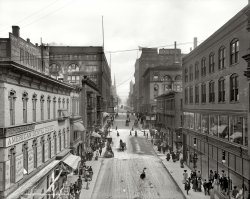
- City Market: 1906
- Circa 1906. "City Market, Kansas City, Missouri." 8x10 inch dry plate glass negative, ... Museum
Everything has always been up to date in Kansas city.
Locavores beware As a produce grower just west of KC I had ... Posted by Dave - 07/27/2012 - 4:53pm -
![City Market: 1906 Circa 1906. "City Market, Kansas City, Missouri." 8x10 inch dry plate glass negative, Detroit Publishing Company. View full size.
Can I help you, Miss?I'll take a bushel of red apples, a peck of potatoes, and a hug around the neck.
Paper or plastic?Willow, please, with a nice big handle.
The Burglar's DaughterCan't make out the small text of the flyer on the pole to the right but the melodrama, "The Burglar's Daughter" opened on Broadway September 17, 1906. Already advertised in KC when this was taken.
[Plus two other interesting handbills -- "U.S. NAVY CURES RHEUMATIC FEVER" and "U.S. NAVY CURES SCROFULA." Where do I enlist? - Dave]
Could it be the West Bottoms?What a great photo! Having lived in KC now for about 20 years, I am of course trying to place this scene in the context of what buildings currently remain in the River Market from this time. Many things have changed -- obviously -- but this scene looks more like the West Bottoms area of KC to me. Could it be?
Bananas for SaleI can't help but notice the large pile of bananas for sale. Were they quite expensive at this time, being rather fragile and shipped over long distances?
City Market at Fifth & Walnuthas been there since 1857. It looks kinda the same as it did in 1906 but is larger and I guess somewhat nicer. In the 1970s it was part of an entertainment area then known as the River Quay. Restaurants, Bars, Music, Fun. As it turned out it was heavily owned by the Mafia who had turf battles with explosives.
The River Quay is no more, but the area is now thriving with the City Market as an important anchor. Among interesting attractions is the Arabia Museum which has the largest collection of pre-Civil War artifacts in the world.
Some Useful Links Are:
Crime Magazine
City Market Website
Arabia Steamboat Museum
Everything has always been up to date in Kansas city.
Locavores bewareAs a produce grower just west of KC I had figured the photo for sometime in October, so the Burglar's Daughter comment was nice corroboration. What interests me, however, is how little local food there really was ... at a time when produce is abundant. Only the bananas appear to have been shipped in from away.
Starting from the left there are a few sweet potatoes (just to the right of the barrel), loads of leeks or possibly green onions (both of which grow very well in autumn around here), and what I think might be radishes just to the left of the door. There's one small basket of Irish potatoes, and a braid of garlic (which would have been harvested in early July).
Moving to the fruit stand there are some excellent pears, loads of apples, and (most interestingly) a few bunches of grapes. Eastern Kansas and western Missouri used to be prime orchard country and in the early 20th Century apples would have sold for about 25 cents for an eight-quart basket (=quarter bushel, or around ten pounds). This vendor also has a few sweet potatoes.
Most of the other stands are about the same, though there might be a few bunches of carrots at one. The main potato vendor is to be seen between the two women -- he's counting his money -- and his crop has probably been in underground storage since July. Many farmers grew potatoes along the Kansas River valley and after harvest would store them in spring-cooled buildings cut slightly into the bedrock on the south side of the valley (thereby facing north).
A farmer just south of us had his own siding on the A.T.& S.F. for shipping barrels of potatoes into this market, and the ruins of his potato buildings are still there.
Yes we have no bananasBananas had actually been available for a few decades by 1906. When they were first being imported in the 1870's, they were indeed very expensive: 10 cents each, which is what a poor man might earn working all day. They were consumed as a delicacy.
By the end of the century though, they were sufficiently cheap to have worked themselves into popular culture and consciences. The age old gag of slipping on a banana peel is much more than 100 years old.
Bananas by the bunchThe "Gros Michel" (Big Mike) variety of bananas which were sold during this period were less fragile and traveled better than the Cavendish variety commonly imported now. (Supposedly, they were also bigger, sweeter and, well, more banana-y.) The Gros Michel was harvested and shipped by the several-foot bunch, and held in climate-controlled ships and railroad cars until arrival at the local wholesaler, where they were trimmed off the trunk into the smaller "hands" displayed at the grocer's. Winter shipping would have been relatively inexpensive, due to less need for icing the refrigerator cars and the lack of domestic produce haulage.
The Gros Michel variety was wiped out by Panama Disease by the 1960s, and cultivation was switched to the Cavendish. Possibly apocryphally, the disease caused a temporary shortage in the 1920s and led to the song "Yes! We Have No Bananas."
The Burglar's Daughter, or a True Heart Wins FriendsThis 1899 children's book by Margaret Penrose was made into a musical, and there is a film short from 1908. The sign likely is for the musical.
You Are HereThis picture appears to have been taken from 5th and Walnut Street looking north. In this Sanborn Fire Map, note the Market House and City Hall. The best clue is the road that is on the right side of the picture. Based on the map, it can only be Walnut Street.
We have a framed print of this pic in our home. We live at 2nd and Walnut (Old Townley Lofts) in the River Market area of KC. The current City Market is bounded by 3rd & 5th Street and Grand & Main.
We love Shorpy.com and our print. It is like a little time machine that takes us 105 years into the past.
JP Carter
K.C., MO
(The Gallery, DPC, Kansas City, Stores & Markets)](https://www.shorpy.com/files/images/4a13237a.thumbnail.jpg)
- Miami, Florida: 1908
- ... Cigars, anyone? It looks like the main street of Ybor City near Tampa, Florida.
[Close, but no cigar. - Dave]
Titusville, ... my eyes playing tricks, but I think I see a reference to Kansas City in the banner stretched across the street.
I'm guessing ... Posted by Dave - 10/14/2014 - 12:58pm -
![Miami, Florida: 1908 Circa 1908. Who would care to hazard a guess as to the location of this bustling metropolis? Extra points for Street View. Detroit Publishing Co. View full size.
UPDATE: The guesses as to the location of "Anytown, USA" (this post's original title) were, quite literally, all over the map -- from Deadwood to Buffalo to Whitehouse, Ohio. Many incorrect guesses for Titusville, Florida. The correct answer, and original caption: "12th Street, looking east, Miami, Florida."
Cigars, anyone?It looks like the main street of Ybor City near Tampa, Florida.
[Close, but no cigar. - Dave]
Titusville, FloridaMain Street
Titusville FloridaTitusville was the home of E.L. Brady Groceries!
GuessingI'm guessing it is Titusville.
Miami, 1200It would appear the MacArthur highway removed this locale:
View Larger Map
Location is.Titusville Florida
Titusville, FLTitusville. FL? A grocer with the same name had a building there:
I have to admit I'm not too confident; the bank building looks wrong.
Florida?Google search suggests that this may be early Miami, with E.L. Brady Groceries on right, and Frank T. Budge Hardware on the left.
Miami, FLI believe this is Miami, Florida, corner of 12th Street (now Flagler Street) and Avenue D (now Miami Avenue).
View Larger Map
I know, I know!It's the home of the Ace Novelty Company in Walla, Walla, Washington. What do I win?
Miami Map 1919This map shows Avenue D (now Miami Avenue) and 12th Street to be somewhere under the pilings for MacArthur Freeway. Too bad about the grand old house on the left a few blocks up. That shoulda been a keeper.
E.L. Brady's grocery storetells me this is Titusville, Florida.
Miami, FloridaThis is 12th Street, looking east, Miami, Florida.
Miami?A guy named E.L. Brady was a grocer in Miami around that time.
Wild GuessBrooklyn, New York
IdentityWashington Avenue, Titusville Florida.
Possible answerI cheated and Googled "E.L. Brady" grocery store" and got Titusville, FL. Did I win?
MiamiSome research indicates Flagler Street and Miami Avenue , although street view is hard to recognize.
MiamiAvenue D (now Miami Ave.) and 12th Street, Miami, Fl. It looks like it's beneath the MacAurther Causeway now.
Titusville FLA.Main Street?
Is it KC?It could be my eyes playing tricks, but I think I see a reference to Kansas City in the banner stretched across the street.
I'm guessingTitusville, Florida?
Taking a guessI think the location is somewhere in Titusville, Florida.
Titusville, Florida?Okay, here's my detective work. I Googled C.W. Schmid's Restaurant to no avail, but then I saw the E. L. Brady and Co. Groceries sign and tried that. It took me to this site, which mentions a store by the same name in Titusville. Am I right?
Brady Grocery, Titusville, Florida407 S. Washington Avenue, Titusville, Florida
"Titusville's first grocery store, L.A. Brady Grocery Store, was built in 1880. This and other buildings immediately south were occupied by Jackson Garage, Coca Cola, Bryan-Conway Realtors, Grower's Supply and Sears. The building was renovated and reopened in 1988 as the Granada Building, housing several government agencies and businesses including Gulf Atlantic Title, Cathedral Holdings and Loys Ward Surveying and Engineering."
I had not a clueBut I thought maybe somewhere up north because of the awnings, which I thought might protect from the harsh winter snow. Duh! I could not have been more wrong. Turns out they were protection from the hot sun of Florida! Having lived there for a tortuous 6 months, I should have known better.
I'm guessingTitusville,FL.
Jacksonville, Florida.It has to be Jax. There's crap in the street and it looks like a slum. Nothing has changed.
My guess is MiamiSearching for E.L. Brady's lead me to this conclusion based on this page, and this quote:
On March 3, Flagler dispatched John Sewell and twelve of his best black workers from Palm Beach to Miami to begin work on the townsite. They began by grading the site of Flagler’s hotel. (72) By late March the railroad extension had reached a point just below Arch Creek near today’s Northeast 135th Street. (73) Increasing numbers of people were coming to Miami. In order to provide them with a place to stay, Harrington and Tyler leased the Miami Hotel from Julia Tuttle — even before it had a roof over it. Located on today’s South Miami Avenue near the river, the hotel contained a dining room on the first floor and rooms on the second which only could be reached by ladder, since a staircase had not been completed. (74) A former steamboat, the Rockledge, was converted into a floating hotel by E. E. Vail, towed to Miami and docked at the foot of Avenue D (today’s Miami Avenue). (75)
Several new businesses had just opened or were about to open as March drew to a close. These included Frank Budge’s hardware store, Frank Duren’s meat market and green grocery, E.L. Brady’s grocery store, and the Lummus Brothers’ general store; additionally, a drug store, candy shop and pool room looked out over Avenue D. The lumber to build the Bank of Bay Biscayne building was being hauled to its lot next to the Brady grocery store. (76)
Survey saysI believe this is Brooklyn, NY. I took the easy way out and just searched for 1200 Avenue O from the side of the grocers wagon
Joe from LI, NY
View Larger Map
Miami?A Google search for
"e l brady" grocer 1200 ave d
turned up this link. On page 69 of which is mentioned a small grocery in Miami, run by an E.L. Brady.
A guessIs it Titusville Florida?
It's downtown MiamiThe Historical Museum of Southern Florida puts E.L. Brady Grocers, 1200 Avenue D, in Miami at that point. Avenue D is now South Miami Avenue. I'm not familiar with the area to know if the street numbering was retained.
Schmids Furniture, Whitehouse, OhioWhitehouse, Ohio? There is a reference to a "Schmids Funiture" still there in 1937 when this was written.
An updated guessIs it Miami, Florida?
MaybeTitusville, Florida?
TitusvilleStill working on the street view.
Miami, Florida?Miami, FL, 12th Street.
Anytown USA = Whitehouse OHIf you google "Schmid's Furniture" and have google uncorrect it, there's a PDF link to a report on Early Whitehouse History. In there is a reference to Schmid's Furniture on Toledo Ave (which looks very different today in Street View)
Some leadsA search for E.L. Brady's grocery brought up a couple things. This page mentions the cart part of the business, which would place this in Titusville, Florida, to the East of Orlando.
This link contains a picture of an historical marker in Titusville, which mentions that the building where Brady's grocery would have been housed in 1908 still stands, and is to the right of the sign. I'm pretty sure I've located the sign in street view here:
View Larger Map
The gardening has changed from the pictures, but the background matches up perfectly. The only step from here would be to go a few ticks over on street view and turn around, but this is where I stopped. Either I have the wrong spot or the view has changed considerably.
Found it?I found reference to E.L. Brady's grocery store which leads me to believe this is Titusville, Florida.
The building was home to E.L. Brady's grocery store. He first established his business in LaGrange, but moved to Titusville in 1886, occupying a wooden building at Main Street. The 1895 fire destroyed his store and many wood structures in the commercial district. Brady rebuilt his grocery in this building
Is this it?Not much left from 1908.
View Larger Map
No DoubtThat's downtown Anytown. (Read the heading.)
Titusville?Looks like E.L. Brady's Grocery store was located in Titusville, FL. That could be the site of this shot, perhaps...
Fort Pierce / St. Lucie, FLMan, is this a depressing indicator of change.
View Larger Map
ETA: Darn, not correct!
Miami, Fl ?http://www.hmsf.org/collections-south-florida-birth-city.htm
On March 3, Flagler dispatched John Sewell and twelve of his best black workers from Palm Beach to Miami to begin work on the townsite. They began by grading the site of Flagler’s hotel. (72) By late March the railroad extension had reached a point just below Arch Creek near today’s Northeast 135th Street. (73) Increasing numbers of people were coming to Miami. In order to provide them with a place to stay, Harrington and Tyler leased the Miami Hotel from Julia Tuttle — even before it had a roof over it. Located on today’s South Miami Avenue near the river, the hotel contained a dining room on the first floor and rooms on the second which only could be reached by ladder, since a staircase had not been completed. (74) A former steamboat, the Rockledge, was converted into a floating hotel by E. E. Vail, towed to Miami and docked at the foot of Avenue D (today’s Miami Avenue). (75)
Several new businesses had just opened or were about to open as March drew to a close. These included Frank Budge’s hardware store, Frank Duren’s meat market and green grocery, E. L. Brady’s grocery store, and the Lummus Brothers’ general store; additionally, a drug store, candy shop and pool room looked out over Avenue D. The lumber to build the Bank of Bay Biscayne building was being hauled to its lot next to the Brady grocery store. (76)
Anytown, USA is Titusville, FloridaAnytown, USA is Titusville, Florida
"E.L. Brady and Brother Grocery Store, a well established business located on Washington Ave. in downtown Titusville, put into use a delivery wagon in order to provide better customer service."
Judging by the number of wiresI would say: NYC.
Miami, Florida ...perhaps the corner of D (now Miami) and 12th Avenues?
After Titusville, FLAfter Titusville FL Mr. E.L. Brady, Grocer, moved to Miami and opened up his grocery store on Avenue D. Not sure what that is called now though.
Titusville Fla. Probably S. Washington St.
That was funThat was fun.
I was one of the Titusville people. Got it wrong. Oh well.
How about doing something like this once a week?
Not a palm tree in sightThe grocer E.L. Brady originated in Lagrange, Florida and relocated to Titusville, Florida in 1886. He would eventually became the first grocer in Miami, Florida at Ave. D and 12th Street. Today, this intersection would be Flagler Street and Miami Avenue. An interesting 1901 photo of the mustachioed Mr. Brady can be seen here.
A guessBuffalo, NY.
Found a reference to a wedding in the NY Times where Mr. and Mrs. E.L. Brady from Buffalo attended.
Brooklyn?Probably wrong, but I'll hazard a guess at Brooklyn; 1200 Avenue D is near the intersection of Flatbush, which would make that little side street on the left E. 23rd St.
View Larger Map
Is it Louisville?I think this may be Avenue D in Louisville, KY.
Miamihad an Avenue D in 1908 and a grocer called E.L. Brady.
Welcome to MiamiLooks like it's somewhere on what is now South Miami Avenue - possibly where the Route 970 overpass is now located?
FoundView Larger Map
Stop 17 on the historical walking tour.
Historical marker north of the building.
Hazarding a GuessI'm going to guess we're looking at Old Miam, South Miami Avei?
Just a GuessTitusville or Miami, FL.
Titusville, FLJust a guess.
Titusville, FLI think I see an atlas rocket taking off from the cape in the background.
Florida townI believe this is Titusville Florida.
LocationThis was taken in Miami, Florida at the corner of what is now Flagler Street and Miami Avenue. Everything in the original photo is gone, even the street names! Flagler and Miami used to be 12th Street and Avenue D, respectively.
Titusville, FloridaHome of E.L. Brady, Grocer.
Doesn't Look Like Florida to MeMy guess is Titusville FL, because that is the only place I can find a E L Brady that is a Grocer on the 1900 and 1910 census. Am I correct?
Miami, FloridaThat's my guess.
Deadwood, SD?Shot in the dark guess. Just seems very western.
Gag! I was wrong, wrong, wrong. Embarrassing since I was born and raised in Fort Lauderdale, and my grandparents + my mother moved to South Florida in 1917.
Miami, FL?Possibly Miami, as per an obituary for E.L. Brady (pulled from the "E.L. Brady and Co" store on the right, beyond the real estate agent).
That would make this shot somewhere in the vicinity of Flagler and Miami Avenue.
Miami FloridaAvenue D and 12th Street. Now Flagler Street and Miami Avenue. See if I can get a Street View.
Definitely MiamiFrom "Early Miami Through the Eyes of Youth" by William M. Straight, M.D., p.69:
"How did you get your dairy products and your groceries? Well, there were two grocery stores, little things. I think the first one was operated by a Mr. Brady, E. L. Brady, who moved here from Titusville."
On Page 63, there's mention that Avenue D is now Miami Avenue. 1200 Miami Avenue:
View Larger Map
MiamiE. L. Brady opened one of the first grocery stores in Miami, Florida. In 1908, the Bank of Bay Biscayne was located next door. I think this is the intersection of Miami Avenue and Flagler Street.
Let's see nowThere's a tag that says "Florida," but there's also a tag that says "Detroit."
Follow upFollow up to my earlier comment about E.L. Brady; according to the same obituary, E.L. Brady was an earlier settler of Titusville, FL, and started a grocery there, too.
So this could be Titusville, FL.
E. L. Brady Co. GrocersAt the corner of Avenue D and 12th Street in Miami:
Titusville, FLLooks like it's in Titusville, FL, though I'm having trouble pinning down the exact location for a Google Street View.
Halcyon HometownFinally, a shot of MY hometown, Miami!
When Miami scrapped its old street naming system in 1921, they threw out the house numbers along with the street names for the present day quadrant system.
The shot was taken on today's Flagler Street (formerly 12th Street) looking east at Miami Avenue (formerly Avenue D). The lions on the left guarded the Bank of Bay Biscayne, which stood on the northwest corner of Miami Avenue and West Flagler Street. The Halcyon Hotel, with its distinctive turrets, stood at East Flagler and 2nd Avenue (formerly 12th Street and Avenue B). It can be seen down the street on the left side.
It'd be great to see some more Old Miami shots! Thanks, Shorpy!
Let me guessI'm gonna go out on a limb here and guess that this city is in Florida?
I'm thinkingTitusville, FL
Thank you, Mr. Brady the grocerIt's Miami.
HOW COULD YOU TELL????I enlarged the photo, combed all the print details, how can you possibly recognize it a hundred years later????!!
(Thanks for the fun though.)
Bay Biscayne BankAccording to the Sanford Fire Map of 1899, the Bay Biscayne Bank was around the corner on D Avenue, on the NE side of the intersection, up the block on D Avenue slightly. Of course, it may have moved across the street to the NW corner by 1909. In the 1909 edition of Florida East Coast Homeseeker, it ran an ad noting it had moved to new digs in the Fort Dallas Bank Building; the one with the columns on the immediate left, and just west of the bank building, would have been the Biscayne Hotel in 1899. The weather bureau opened a station in the Bank of Bay Biscayne Building at that same location in 1911, so by then the building seems to have dropped the Fort Dallas appellation. The picture of the bank building provided by the NOAA website must be looking NW at it catercorner across the intersection.
(The Gallery, DPC, Florida, Miami)](https://www.shorpy.com/files/images/SHORPY-4a25100a.thumbnail.jpg)
- Little Italy: 1900
- ... meal. Alleva Dairy, one of the oldest stores in the city, is the first stop. Next door is a great pasta shop. There's a wonderful ... at least for awhile. Most of them migrated to Ohio and Kansas not liking city life and having farming backgrounds. This is an ... Posted by Dave - 05/09/2020 - 6:49pm -
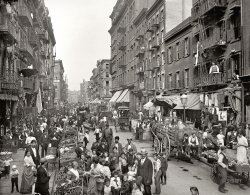
- No Loafing: 1906
- Kansas City, Missouri, circa 1906. "Jackson County Court House." Please mind the ... lexicon.
Pre-Grading Remnant Although the old Kansas City court house was truly magnificent, what interests me more is that ... Posted by Dave - 08/15/2012 - 3:53pm -
![No Loafing: 1906 Kansas City, Missouri, circa 1906. "Jackson County Court House." Please mind the signs. 8x10 inch glass negative, Detroit Publishing Company. View full size.
Dog ParkI count two. Anyone see more?
What is it?On the sidewalk under the "Loafing" sign -- you decide, is it a hitching post or a fireplug for a toy firetruck?
It just looks so tiny sitting there!
2 DogsAnd one is loafing.
Neo-LoafI intend to lead the movement to return "loafing" to the popular lexicon.
Pre-Grading RemnantAlthough the old Kansas City court house was truly magnificent, what interests me more is that stone house perched up high above a stone wall to the right of the courthouse. Prior to the 1860s, downtown Kansas City had very different landscape of high limestone bluffs along the Missouri River. These were graded to better accommodate commerce and city-building. The Greek Revival style and elevated site show this to be one of Kansas City's early houses -- can anyone out there identify it?
Canine LoaferAs a present day resident of the area, a detail I can appreciate -- the stray dog hanging out at the far right edge of the sidewalk!
[There are two dogs in this photo. - Dave]
Black smoke means ...What are they burning, in there? Coal. Sure. Or maybe there's black market bakery in the basement, just beyond that propped-open door. Loafing on these grounds: prohibited. Loafing inside, if you gots the passwoid: "The brisk breeze billows the burning buns."
TrashWhat's with all the litter??
Litter patrolIs that trash I see on the lawn? Tsk tsk. Get someone form the chain gang out there to cleanup!
Would this be where Truman got his start?He was active in Jackson County politics in Prendergast's organization after WWI.
(The Gallery, Dogs, DPC, Kansas City)](https://www.shorpy.com/files/images/4a13241a.thumbnail.jpg)
- Cow Town: 1906
- Kansas City, Missouri, circa 1906. "Kansas City livestock exchange." 8x10 inch dry plate glass negative, Detroit ... Posted by Dave - 07/25/2012 - 6:50pm -
![Cow Town: 1906 Kansas City, Missouri, circa 1906. "Kansas City livestock exchange." 8x10 inch dry plate glass negative, Detroit Publishing Company. View full size.
The smellOne of the bridges between KC, Missouri and KC, Kansas passed over this facility. I'll never forget that smell!
Must be a SundayMost of the cattle seem to have the day off.
Odor and bricksThere is still a pile of bricks from the old stockyards (red bricks used for roads back in the day) piled up near Kemper Arena, wich was built on this location. [Kemper was the home of the American Royal rodeo until this past week, when it was announced that the new sprint center will be hosting it.]
They are yours for the taking, but they hold an odor of a cowpie from years gone by. Needless to say, that pile of bricks remains today.....seems the price of a new odorless one at the lawn and garden store beats a free stinky one from the West Bottoms!
Glad for the restricted technologyPeople are hard at work on scent synthesizers/generators; I read one proposal about billboards that would advertise hamburgers and also put burger smell in the air. This is one photo where I am happy I can't also smell the scene.
Building weightThat is a massive amount of weight elevated above the ground. Is the building still there or is it long since gone?
[The building is not "elevated." - Dave]
OdorousWhile we're on the subject of odors. In 1960 Mike Todd produced a film called "The Scent Of Mystery" that featured his then wife Elizabeth Taylor in an uncredited role, and the title song was sung by her next husband Eddie Fisher. It featured a process, to go along with the beautiful Todd AO Projection system called "Smell-O-Vision". Pipes running alongside the seats delivered aromas like burning pipe tobacco, perfume, bread and wine, among others during the film. It only showed at one theatre in the Times Square Area, I believe it was the Warner. Needless to say the film and its Smell-O-Vision feature bombed. Henny Youngman joked "I didn't understand the picture, I had a cold."
[In 1960, Mike Todd had been dead for two years. - Dave]
You're right Dave. It was Mike Todd Jr who produced the film. That made him Elizabeth Taylor's stepson.
ImpressiveI am amazed at this photo's depth of field, especially for a large format negative. Great photo.
The Smell of MoneyI'll bet that would open your sinuses if you lived downwind from that place. A lot of eyewatering also.
Elizabeth, in this scene you'll be eating a big candy barYears ago I worked for a chocolate company in Pennsylvania that wanted to add chocolate aromas to its visitor center which (still) features chocolate pretending to be made. One idea was to pipe the real smells from the real factory, down the road. But apparently the sweet scents, the company's experts decided, would have dissipated too much during their pipeline journey. I forget how this was resolved but I do know that the liquid chocolate being stirred in several of the center's simulated production is (or was) paint, to prevent problems of spoilage and insect attraction.
A Big YardI remember when my dad first took me to the stockyards I was probably 7 or 8 years old (in the 1960s) and he said he was about my age when his father first took him. So the pic holds nostalgia value for me personally. I remember I was in total awe. Everything looks bigger when you're a kid, but I remember the place being massive. I'm not sure this picture adequately represents how vast the operation was. For exmaple, most of the livestock was transported by rail, and I don't see the rail lines.
I just did a quick Google search and found some history on the stockyards if anyone is interested:
http://livestockexchangebldg.com/history.php
Childhood Reference PointWhen I was a child my father, who grew up in Kansas City, used to say, every time we went past something that smelled bad, "reminds me of the Kansas City stockyards."
Now I know what they looked like (if not smelled like).
They moved across the riverNowadays the stockyards are in Kansas, you drive right past them on your way to the bridge to MO.
(The Gallery, Agriculture, Kansas City)](https://www.shorpy.com/files/images/4a13243a.thumbnail.jpg)
- Candy, Cigars, Souvenirs: 1920
- ... maybe even suburbia, a stationary engineer, to those of us city folk, is usually the building superintendent, or as we know him (or her), ... of the Washington-Virginia Railway, departing from Mid-City Terminal at 12th and Pennsylvania. - Dave]
Bon-Ami When I ... balm to her outraged feeling, the former Kansas hatchet wielded read from the witness box passages of Scripture ... Posted by Dave - 09/11/2011 - 7:17pm -
![Candy, Cigars, Souvenirs: 1920 "Standard Engraving Co., Minster Building, 12th Street N.W." circa 1920. National Photo Company Collection glass negative. View full size.
12th and PennsylvaniaBased on ads in the Post, the location appears to be the southwest corner of 12th and Pennsylvania Ave, NW. - across the street from the Old Post Office and now site of Federal Triangle. Minster's Corner was operated by Samuel D. Minster. Washington-Virginia Railway was located at 1202 Pennsylvania.
Washington Post, Mar 30, 1902
I have purchased the old reliable and long-established business of H.A. Seligson; 1200 and 1202 Pa. ave. nw., and have added to the already superb stock of Wines, Liquors, Cordials, and Cigars... One of the distinctly new features of the establishment will be the attendence of lady clerks for the ladies' trade.
Eldorado Wine Co., Samuel D. Minster, Prop.,
S.W. Cor. Pa. Ave and 12th st. N.W.
Washington Post, Jun 30, 1904
The National Association of Stationary Engineers, No. 7, met at its hall, at Pennsylvania avenue and Twelfth street northwest, Tuesday night .....
Stationary EngineersTo head off the inevitable questions, stationary engineers supervise engines in a fixed location such as in power plants, factories, mines, water pumping stations and so forth, as opposed to marine engineers or locomotive engineers. I believe the current union calls itself "Operating Engineers" which includes what we used to call building supers.
Your Weight and FortuneIs that a fortune-telling, penny weight scale outside the door of the Fussel's ice cream store? No wonder the place went out of business.
Stationary EngineersFor those of you who live in the country or exurbia and maybe even suburbia, a stationary engineer, to those of us city folk, is usually the building superintendent, or as we know him (or her), "the super".
Electric carsVery interesting to find out that, even in such a late time as the 1920s (when this photo is dated), there was still possible to get a ride on an electric car. One can only wonder what would have happened if those had caught on for public transport; maybe we wouldn't be choking in as much smog as today.
[They did catch on. They were called streetcars. In this instance, "electric cars" were the interurban trolleys of the Washington-Virginia Railway, departing from Mid-City Terminal at 12th and Pennsylvania. - Dave]
Bon-AmiWhen I was growing up in NYC back in the '50s, it was common for landlords to apply a film of Bon-Ami window cleaner to their rental store's front windows and door whenever it was vacant or during refurbishing, as is the case in this photo. I've not seen it used in years and don't even know if Bon-Ami is still sold. Thanks for jogging a nice bit of wistful memory for me.
Bon-AmiYes, Bon-Ami is still available. It is the only scouring powder we use. I buy it at the grocery store.
Non-IntoxicatingReif's Special was a short lived non alcoholic beer type drink.
Non alcoholic sodas gained in popularity after prohibition in 1916.
Reif's Special, described as "A Pure Liquid Food", was manufactured in Chattanooga, TN by Martin Lynch in 1917.
[advertisement text]
Reif's Special
Serve Cold
It Is Not A Compound
Here is the triumph of man's inventive genius - just
what the world has long been awaiting - a beverage
that has all the snappy flavor and foaming goodness
of the hops with the alcohol left out. That's done by
a patented process. We are the pioneers. Beware of imitations.
At soft drink places - in bottles or cases.
Martin-Lynch Co., Distributors
Carrie Nation's FrolicMinster's Corner was once the focus the famed Carrie Nation's ire.
Washington Post June 14, 1907
Mrs Nation fined $25
Saloon Smasher Pays Up After Temperance Lecture to Judge
Mrs. Carrie Nation's frolic in front of S.D. Minster's store, at Twelfth street and Pennsylvania avenue northwest, Wednesday night, cost her $25 in Police Court yesterday. Incidentally, and as a self-administered balm to her outraged feeling, the former Kansas hatchet wielded read from the witness box passages of Scripture touching upon intemperance. Blackstone, as interpreted by Judge Mullowny, did not appeal to Carrie. Neither did her Scriptural readings to the judge, whose calm, judicial reasons was:
"I find you guilty of disorderly conduct, as charged. Twenty-five dollars fine, please."
Mrs. Nation's friends made up the $5 additional to the $20 which she deposited in the First precinct station for the appearance in court. The saloon wrecker departed, after discoursing freely as to the evils of strong beverages and cigarettes.
Mount Vernon RailwayThis building was the office and station of the Washington, Alexandria and Mount Vernon Railway, an interurban road that had a loop terminus in front of George Washington's Mount Vernon estate. The circular concrete drive in front of the main gate was once the railway right-of-way. Electric interurban cars pulled up alongside the awning in the photo for passengers.
Frank R. Scheer, Railway Mail Service Library
Carrie NationThe Washington Post article cited below is dated June 14, 1917, and the story appears to be reported as current news. Yet all three links for more Carrie Nation information give her date of death as 1911. Hmm...
Once again Shorpy piques my interest, and I learned something today about the history of the temperance movement and Mrs. Nation.
[The date on the news clip was a typo. It's from 1907, not 1917. - Dave]
Holmes PiesIs that Holmes Pies any chance the precursor of the Helms Bakery trucks with the slide out trays of bread, donuts and pastries which I recall roaming the neighborhoods of my youth in the western states? They disappeared in the 60's or 70's, as I recall.
[I don't know about Helms. But Holmes Bakery had its own fleet of trucks [Link 1] [Link 2] [Link 3]. - Dave]
No Sherlock, HolmesIt just dawned on me that it was the Helms Bakery that had those panel trucks that went around the neighborhoods. I think it was the burgeoning supermarket industry that did them in, just as with the home milk delivery boys. Obviously, a Sherlock I was not when it came to Holmes Pies...
(The Gallery, D.C., Natl Photo, Stores & Markets)](https://www.shorpy.com/files/images/29858u2.thumbnail.jpg)
- Cheers: 1937
- ... W.T. Price II in the Horseshoe Saloon in Junction City, Kansas taken in 1905 by a photographer named Pennell!
(The Gallery, ... Posted by Dave - 07/19/2012 - 10:17pm -
![Cheers: 1937 September 1937. Craigville, Minnesota. "Saturday night in a saloon." Medium format negative by Russell Lee, Farm Security Administration. View full size.
White gasKerosene lanterns had just an open flame. These pictured were fueled by white gas and the tank had to be pressurized with a hand pump.
Hands-Off policyInteresting that the "Cheers" folks removed the fellow's hand from the lady's shoulder.
Indoor campingPretty rustic. The lights are kerosene lanterns.
Slim pickin'sA James M. Cain novel is written all over that woman's face.
P.A.Do you have Prince Albert in a sign?
Cheers...... it ain't....
Cheers!Hey! Doesn't the guy holding glass appear in the old lead-in for "Cheers"?
Cheers to you too!Oh my gawd it's the folks from the "Cheers!" intro. I must have seen their colorized faces a thousand times (thanks to reruns), and now I know where they're from.
It's like running into long-lost family members. Thanks Dave!
Where everybody knows your nameThis photo was used in the opening sequence of "Cheers." As I remember, it was cropped, to highlight the couple in the center.
0:43Character actorsCentral Casting, eat your heart out!
Cheers!Remember the opening titles to the TV show "Cheers"? It shows old photos of people at bars. One of the "Cheers" photos is THIS photo; they did a close-up of the guy on the left. And yes, I watch too much TV.
Casting? Sure ...That's Howard Hughes, Patricia Neal, and G.W. Bailey on the right. Can't quite make out the lady on the far left, though.
A certain dignity.Even though these people have seen more than their fair share of hard times, there is a kind of dignity in the way the hold their drinks. Serious drinkers for sure. The guy on the right looks kind of like George Clooney. They all exhibit character with a capital C. The guy on the left is giving a major superiority pose to the guy taking a nip.
The lantern in the back corneris a Coleman. I have one just like it. Still works very well.
A rose is a rose is a rose.A barfly is a barfly is a barfly. Nice hat on the alcoholic on the extreme right, looks like he stole it from a horse. Not politically correct but my opinion.
GaslightNotice the fixture in the upper left of the photo is providing light via gas, not electricity.
[As noted below, that's a kerosene lantern. The tank holds the fuel. - Dave]
CamelsAnd I'm thinking that's a Camel cigarette pack on the bar. Recognize the "pillars" from my father's smokes.
That's where I've seem him!Thanks everyone for restoring my sanity. I saw the guy on the left and immediately thought "were have I seen him before?"
I am a child of the 80's so that's why his face was burned into my brain.
Camels for sureI used to smoke them before Pall Mall. Cigarettes didn't have filters in those days. Maybe it was the "Hits or Cracks" game that made me switch from Camels to Pall Mall. As I remember, you guessed if it was the letter H or C under the stamp. If you picked wrong you got slugged on the upper arm.
Alternate casting suggestionsLeft to right: Rosie O'Donnell, Robert Ryan, Margaret Hamilton, Walter Huston. Whatever is transpiring, it's interesting enough for the Missus to delay her request to "light me."
SimplicityThe beer looks great.
Camel Caravan"Camel" was the first nationally advertised and distributed brand of American cigarettes, beginning in about 1914. My dad's first real job was with their NY Distributor, Metropolitan Tobacco, back in 1921. He smoked Camels and only Camels for the nexr 65 years, and never had so much as a cough ("Not a Cough in a Carload"). Back in my time, if I ran out of my favorite, Lucky Strike, I'm bum a Camel from him. Without any exception, they were the strongest, looseest and hottest burning American cigarette that ever existed. They would have killed me after a year! And yes, I do also remember the H and C thing from under the revenue stamp on the packages.
LanternsActually both lanterns are probably Colemans. The one over the bar is an indoor table lamp, which would have originally come with a shade, much like an electric table lamp. The other one is an outdoor type lantern. Both are missing their globes, a rather alarming fact, as the furring strips on the ceiling suggest that it is made of combustible fiberboard, a cheap and popular building material at that time.
Like most Colemans, these burned "white gas," which I believe is actually naphtha, but kerosene models were also available. More common kerosene lanterns have wicks, but pressurized ones do exist. They can be distinguished from the white gas version by the primer cup below the mantle. You fill this cup with alcohol to preheat the kerosene; otherwise, it does not vaporize properly.
BTW, "not a cough in a carload" was the slogan of Lucky Strike, not Camel. And I don't believe for a second that anyone smoked any brand for 65 years without coughing.
Lumberjack TownSome history on this town, and this saloon can be found here:
http://www.lakesnwoods.com/Craig.htm
This place was evidently both a saloon and a barbershop. There are some photos here of other customers, as well as another shot of these folks.
Another image in original Cheers Theme SequenceThe original Cheers Theme Sequence has a picture of my Great-Grandfather W.T. Price II in the Horseshoe Saloon in Junction City, Kansas taken in 1905 by a photographer named Pennell!
(The Gallery, Eateries & Bars, Russell Lee)](https://www.shorpy.com/files/images/8b19903u.thumbnail.jpg)
- Elks Lodge: 1906
- Kansas City, Missouri, circa 1906. "Elks Club." Welcome to B.P.O.E. 26. Detroit ... World's Fair. After the fair it was purchased and moved to Kansas City.
Magnificent Building What a beautiful building. Does anyone ... Posted by Dave - 08/15/2012 - 3:07pm -
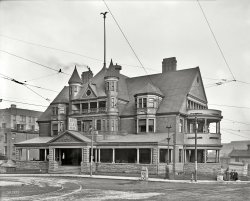
- BOT: 1906
- Kansas City, Missouri, circa 1906. "Board of Trade Building." 8x10 inch dry plate ... This was Burnham & Root's most important commission in Kansas City. The Chicago firm won an architectural competition held for the ... Posted by Dave - 08/15/2012 - 4:15pm -
